This Seemingly Normal Farm In Texas Is Hiding A Morbid Secret
Freeman Ranch in San Marcos, Texas, is a body farm where students study human decomposition.
Written by
If you're currently picturing a scenic farm with wide open spaces that are decorated with decomposing bodies after reading the title of this article, you can officially pat yourself on the back. The gruesome image that you're putting together in your head will most likely not be that far off from what this Texas farm actually looks like. All in the name of science, we're giving you the heads up now that the images in this post have a high chance of making your stomach turn.
With plenty of farmland throughout the city of San Marcos, people could easily drive by this particular ranch without thinking twice about it.

But what most may not realize is that the Freeman Ranch isn't your average farm; you won't find any delicious crops or friendly farm animals here.

Instead... you'll quickly discover that this farm is home to roughly 50 decomposing bodies.

Yes, decomposing human bodies! The bodies are donated to Freeman Ranch, home to the Texas State Forensic Anthropology Center - also referred to as FACTS. Many of the bodies that are at the ranch can be found inside two-foot tall cages that make the entire scene look even creepier.
Texas State University created the body farm so that students would have the rare opportunity to study how the human body decomposes.

Unfortunately it's 2017 and we still have yet to discover any real-life superheroes that are willing to take over the duty of solving any and all crimes. In the meantime, we get to rely on the incredible work done by Forensic Anthropologists. With only a very small number of farms like this in the country, Freeman Ranch has become quite valuable to people who hope to get jobs in this line of work.
Before bodies are put out into the farm, students handle the task of cleaning off the bodies and cataloging them.

Bodies that are donated to the farm will forever remain at Freeman Ranch; after the bodies decompose they're stored in a research facility where they'll be studied throughout future years. While those who decide to donate bodies will never get the remains back, the farm does allow families to make arrangements to visit the donated body.
The farm is equipped with a sophisticated security system, although they've reportedly never had any issues with unwanted visitors attempting to break in.

The idea of this place is creepy and upsetting to many, but students of Texas State University have the chance to learn a great deal from this morbid farm. Some bodies at the farm are kept in cages where only bacteria and insects can make their way to them, while others are left out in the open on the farm where wildlife and other elements can effect the body's decomposition.
To find out other informational facts about the body farm or how you can donate, click here.
Did you realize this type of farm existed in San Marcos? To little surprise, this isn't the only head-turning location you'll find in our state. Take a look at this list of the 10 Weirdest Places You Can Possibly Go In Texas!

Subscribe to our newsletter
Get the latest updates and news.
- Northern California
- Southern California
- Connecticut
- Massachusetts
- Mississippi
- New Hampshire
- North Carolina
- North Dakota
- Pennsylvania
- Rhode Island
- South Carolina
- South Dakota
- West Virginia
Thank you for subscribing!
The One-Of-A-Kind Cottage Farms In Texas Serves Up Fresh Homemade Pie To Die For
If your sweet tooth is half as big as mine, you can’t pass up the chance to visit Cottage Farms in Sumner. One of the best farm bakeries in Texas, this family-run farm and cafe offers all sorts of delicious treats, including the most incredible homemade pies you’ll ever have. The setting is idyllic, the treats are mouthwatering, and the owners are sweet as can be.
Located just outside of Paris in the tiny town of Sumner, Cottage Farms is a family farm with an on-site bakery and cafe. Johnny and Yolanda Harder and their three kids are always thrilled when folks stop by for lunch or a freshly-baked sweet treat.

The interior of the shop is equal parts cozy and stylish, giving modern farmhouse vibes. Plenty of tables allow guests to sit and mingle while enjoying their goodies, and the space is bright, open, and airy.
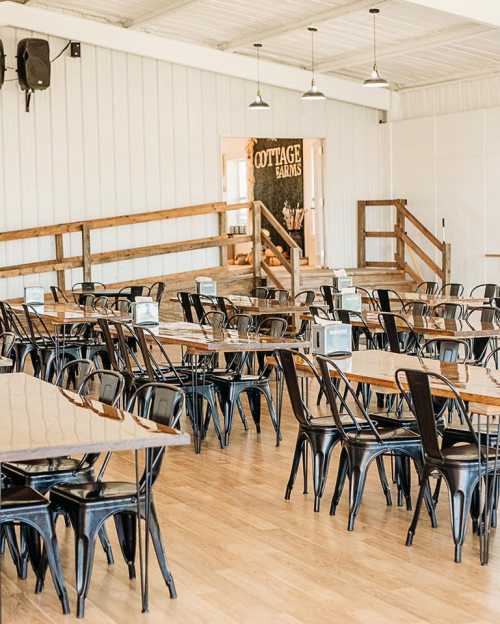
Speaking of goodies, just wait until you take a peek behind the counter! There’s always a huge assortment of mouthwatering baked goods, ranging from cupcakes and cannolis to cookies and cheesecakes. Savory breakfast options are also available, plus lunch selections like soup, salad, and sandwiches.

In my opinion, nothing beats a good slice of pie, and Cottage Farms comes through with all sorts of scrumptious flavors. Whether you like strawberry, banana cream, or chocolate peanut butter, rest assured you’ll find the perfect bite.
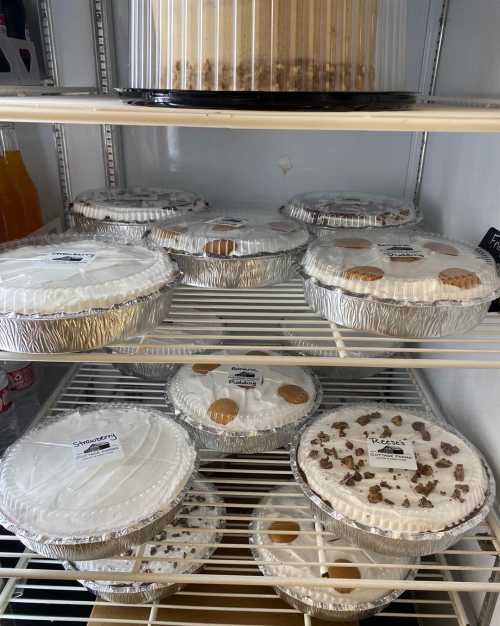
The farm even sells mini pies! These pint-sized Dutch apple and chocolate cuties are *almost* too adorable to eat.
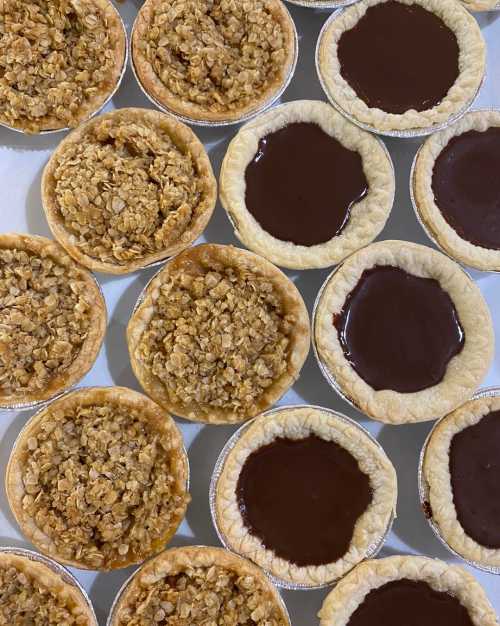
Of course, seasonal pies like pumpkin and pecan make their debut every fall. Order ahead for Thanksgiving to take some work off your plate (pun intended).

If you aren’t a pie person, no biggie. How about a slice of rich, creamy cheesecake?

One of my favorite things about Cottage Farms is that you never know exactly what will be waiting for you behind the dessert case. The menu changes throughout the year, so there’s always reason for excitement.

Seasonal shifts also bring fun, new activities to the farm — like pumpkins in the fall! Bring the whole family for a full day of wholesome outdoor play.

Visit the Cottage Farms website or the Cottage Farms Facebook page for more information, including current hours of operation. You can also purchase some of their products online.
Have you ever been to Cottage Farms? If so, do you think it’s one of the best farm bakeries in Texas? Tell us your thoughts in the comments! Check out our previous article to see Texas’ Eiffel Tower in our state’s very own Paris.
If you’re looking to improve your own baking skills, MasterClass has so many great sessions to choose from.
The One Texas Ranch Where You Can Feed Sloths And Hold Reptiles
Animal encounters in Texas have been part of my life for as long as I can remember. I’ve fed a giraffe at the Houston Zoo, held a snake at a local carnival, and even touched an adorable penguin at Moody Gardens . That being said, few wildlife parks compare to TGR Exotics in Spring. Not only is it a zoo full of unique and endangered animals, but it also lets visitors get up close and personal with sloths, big cats, reptiles, and more.
You’re in for a wild ride when you visit TGR Wildlife Park in Spring, Texas! Over 100 exotic and endangered animals from 25+ species call this incredible place home, and you can get up close and personal with them like never before.

Guests can choose from a variety of experiences ranging from a guided tour of the whole zoo to specific animal encounters. There’s also a Toddler Tour geared towards the younger crowd.

Among the animals you’ll see are deer, aardvarks, hyenas, owls, bears, porcupines, water buffalo, and more. Being able to see these amazing creatures with your own two eyes instead of through a screen is an opportunity you’ll cherish forever.

If you’d like to go beyond the standard tour and meet the animals face to face, you have several options. From sloths and spider monkeys to reptiles and porcupines, the park offers a range of animal encounters where you can touch and feed creatures you may never have seen before.

TGR Exotics also has special events for holidays, plus a kid’s night out where parents can drop their kids off at the zoo for a fun evening of crafts, games, a twilight zoo tour, and pizza and dessert.

The Toddler Tour lasts 45 minutes, while the basic, all-ages tour runs for about 1.5 hours. animal encounters are roughly 15 minutes long.

Visit the TGR Exotics website or the TGR Exotics Facebook page for more information about all of the different tours and animal encounters.
Have you ever done an animal encounter in Texas at TGR Exotics Wildlife Park? If so, we’d love to hear all about your experience in the comments! Check out our previous article to learn about a historic (and haunted!) saloon in Spring . If you need an all-purpose travel bag for your trip (and future adventures!), we love The Foldie .
All Stories
Our eyes played tricks on us at the museum of illusions in washington d.c..

If You Only Have One Day to Visit This Small Town in Mississippi, Here’s Everything You Absolutely Can’t Miss
Bay St. Louis is a small town in Mississippi located right on the Gulf of Mexico that's perfect for a day trip.

The Remote Destination in Iowa Where The Drive Is Worth the Final View
For the most remote hike in Iowa, head all the way to West Oak Forest not far from Omaha - and prepare for a stunning view.

The Breathtaking Small Town State Park in Texas That We Can’t Stop Thinking About

Dine for Less Than $10 a Person at This Iconic Bar & Kitchen in Rhode Island
Dig into a tasty, affordable meal at this throwback bar and kitchen in Rhode Island.

- Texas Hill Country News
- Spirits & Libations
- Places to Eat
- Hill Country Happenings
- Places to Stay
- Things To Do
- Online Magazine
- Caussey’s Corner
- Our Writers
- Real Estate
The Body Farm Won’t Be in a Tour Pamphlet of Texas at Any Point in Time

What is commonly referred to as “the body farm” here in Texas is actually not the psychotic hatching of ideas in a brain gone awry, which may at first come to mind. In fact, it’s officially called the Forensic Anthropology Research Facility, or FARF for short. Yes, it really is a farm. It’s a ranch, actually – Freeman Ranch, to be exact. However, it belongs to Texas State University and it serves as a forensic anthropology resource for researchers, students, and national as well as state authorities for the purpose of learning those very things that you watch nightly or weekly on TV – decomposition processes, postmortem changes, and how various conditions can alter or affect a corpse.

Photo: Facebook/Centre for Forensic Anthropology
A 26-acre outdoor facility for the study of human decomposition, the FARF is situated at Texas State’s Freeman Ranch. Their research laboratory is also on site and it’s the largest of its kind. Does that surprise you? Everything’s big in Texas! Even our semi-gross-but-not-really-when-you-think-about-it kind of things! Used to assist those in forensic science, the body farm is not only a place for the study of body decomposition, but it’s also a tremendous training tool in the back pocket of law enforcement and medico-legal representatives with respect to search and recovery regarding human remains in their particular context.

Photo: Facebook/Texas State University-Clinical Laboratory Sciences Program
Due to the need to advance study techniques in body decay pertaining to patterns, sequences, and rates, FARF was conceived to support such methods applicable to not only Texas but all western states as well. Opening in 2008, research has been carried out on close to 150 donor individuals, with an additional 200 living people who are pre-registered as donors in an effort to continue this very necessary forensic program. Once donor bodies are removed from the farm and properly processed, they are held in perpetuity and then formally accepted into the permanent Texas State Donated Skeletal Collection. Forming the grounds for future research, this collection of documented contemporary skeletal remains will be used for further scientific education and research for years to come.

Photo: Facebook/National Forensic Academy Collegiate Program
As a result of the sensitive nature of the ongoing research and privacy concerns that the body donors and their families had upon approval and documentation, the University of Texas does not allow access to or tours of the Forensic Anthropology Research Facility or its laboratory. Access is limited strictly to faculty and enrolled anthropology graduate students of Texas State, as well as approved researchers, authorized law enforcement officials, and recovery workshop participants during the course of any and all training exercises. You won’t be seeing this in a tour pamphlet of Texas at any point in time, but it’s good to know that the state, the school, and the ranch land in question are doing such research and putting their best foot forward in such science and studies.
References:
Texas State
Texas State FARF

We are your resource for Hill Country travel, things to do, places to eat, places to stay, tourism, events, lodging, and we feature Texas Hill Country info of all manners. Our Texas Hill Country Facebook page is growing by over 1,000 fans per day! We also run the premiere real-estate site in the hill country at HillCountryRealestate.com . We are born and bred in The Hill Country, and we welcome you to our family. Join the discussion on our new social platform Texjas.com !
Latest News
Do you know the meaning of gtt left on abandoned homes, ride the fastest ziplines in all of texas, from texas to the tetons: tony maples, dr pepper jalapeno beef jerky is the most texan recipe there is, do you know what was named the official dog breed of texas, lubbock book festival: free, two-day event on the south plains.
- The Magazine
- Digital Library
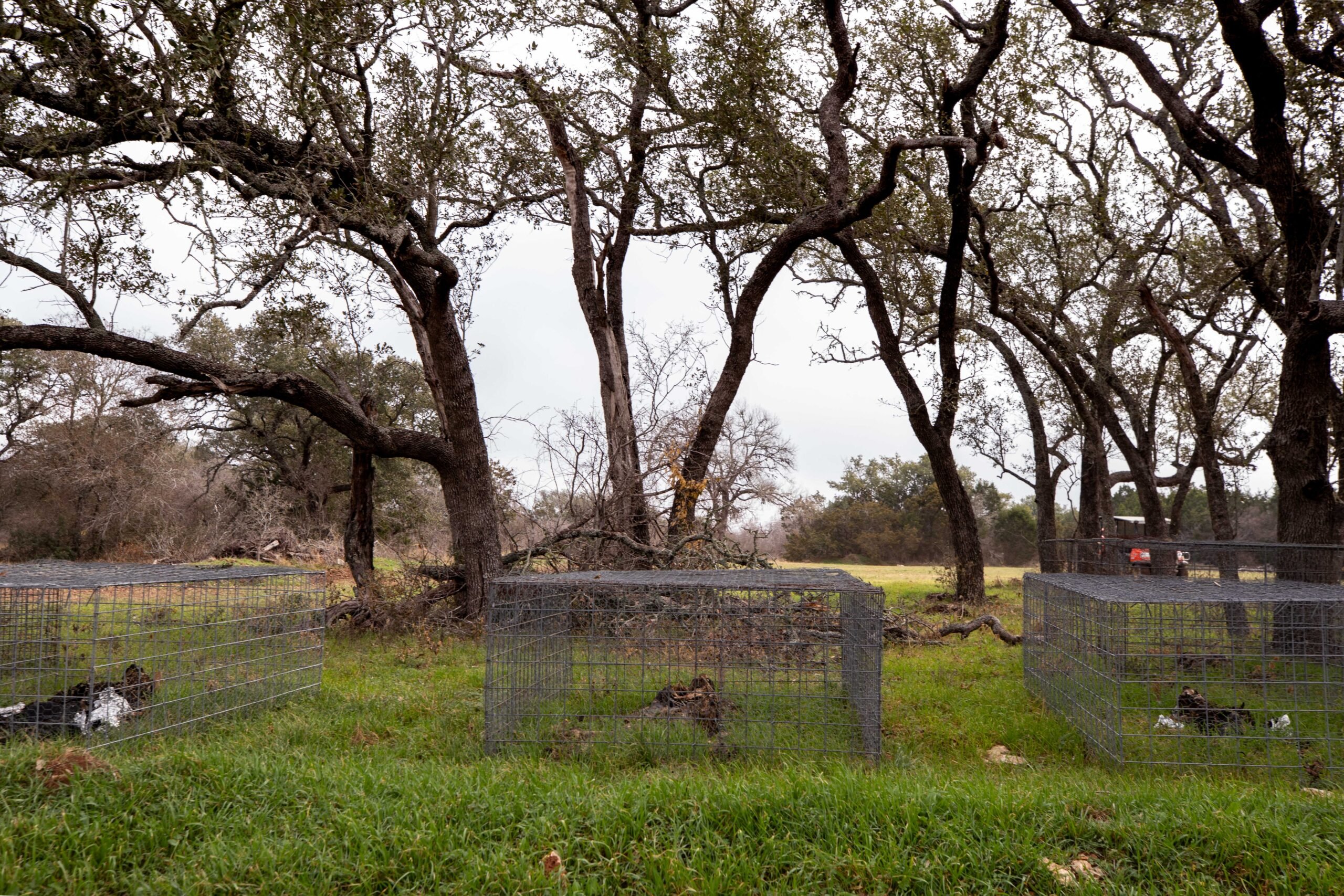
Learning from the Dead
The resident donors at Texas' famed Body Ranch offer many lessons about life—and untimely death.
by Lise Olsen
March 28, 2023, 2:54 PM, CDT
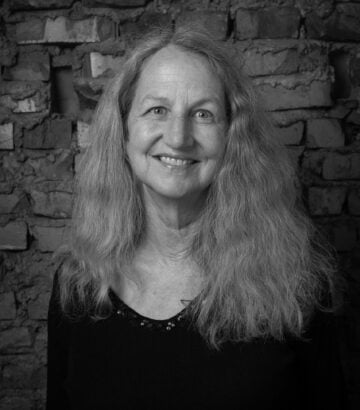
A version of this story ran in the March / April 2023 issue.
(Photo credit: Kaylee Greenlee Beal)
The mysterious woman was lying on a high grassy ridge that offered a sweeping vista, but her eyes were closed. At first, she seemed asleep in her cage, her hair still carefully coiffed, toenails painted red. She could not see the panorama of the plains and river valleys falling away beyond the eastern edge of the Balcones Escarpment.
Without ever talking to her, I already knew her as a generous soul and a person with a strong commitment to science, like other inhabitants of this section of the Freeman Ranch outside San Marcos. Hers is one of about 60 or 70 bodies, some out in the open, some buried underground and others out in cages, at Texas State University’s Forensic Anthropology Research Facility , a unique 26-acre outdoor laboratory better known as the “Body Ranch.”
On this misty January morning, visiting homicide detectives, crime scene investigators, and an intrepid high school teacher divided themselves into teams, all guided by Texas State’s forensic anthropologists-in-training. They were all here to learn from the dead.
This particular week-long course attracted participants from across Texas and from states like California and New Mexico that lack their own so-called body farms.
Today’s mission: to find scattered bones and hidden graves in these rocky, rolling hills.
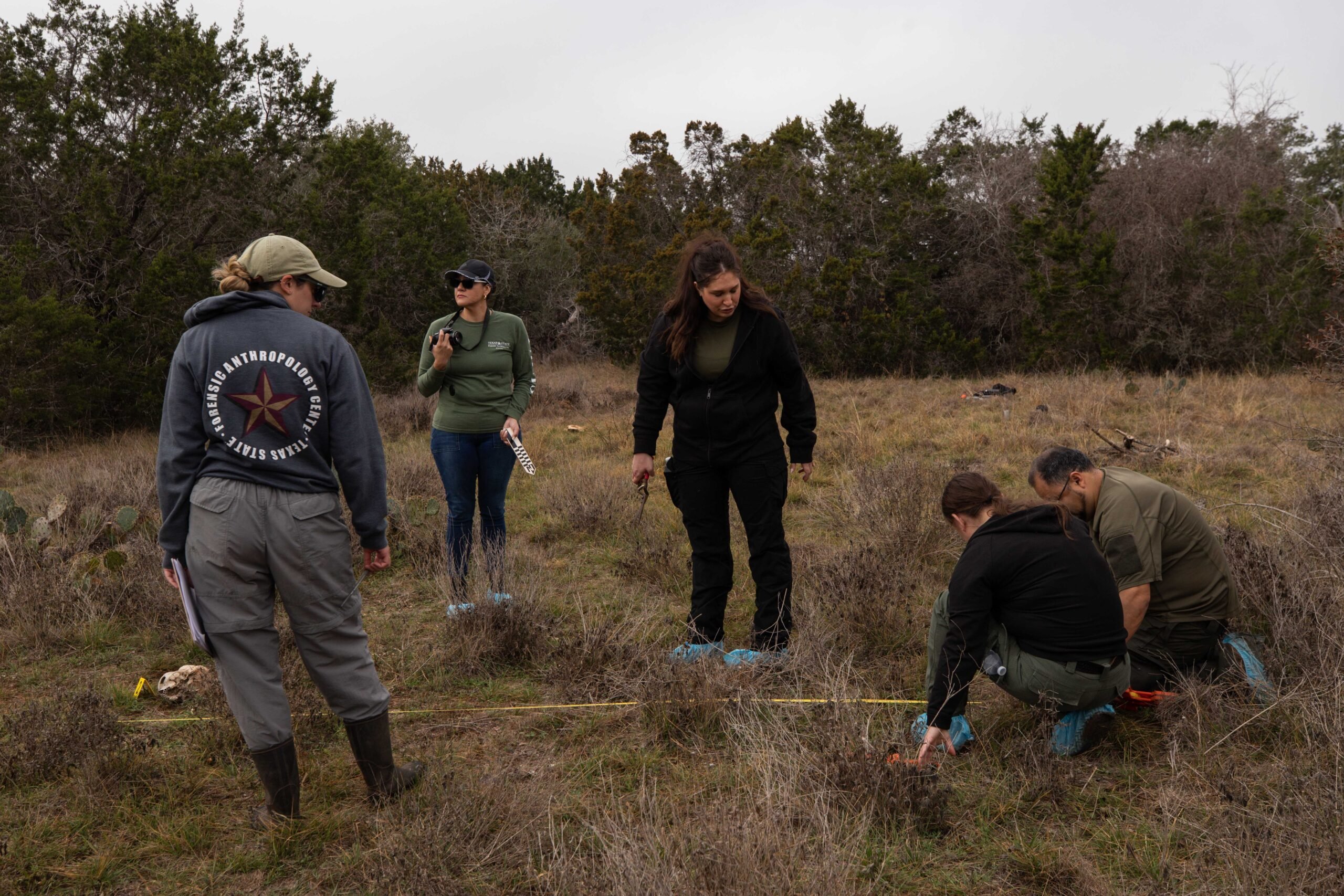
At 9 a.m., each group was assigned to scout out, map, and measure scattered bones on patches of pasture dotted with rocks and prickly pear, a challenging task that gives new meaning to the term “scavenger hunt.” Five participants soon formed a line as instructed by their leader, Emilie Wiedenmeyer, one of the student guides, and shuffled slowly forward together,” scanning the ground for clues.
Then Kathrine Lopez, a high school teacher from Round Rock Independent School District, asked to break rank. She’d spotted something under a tree’s thick branches, possibly a bone dragged there by an animal.
“Go for it,” Wiedenmeyer said, “Just be careful not to step on anything.”
Lopez dove under the branches, unconcerned about the potentially high pollen count associated with this Texas ash juniper, source of the state’s infamous cedar fever, to find only a whitened bit of bark.
She returned to assist others already preparing to mark their finds by poking multi-colored flags between blades of grass. These visitors seem intensely focused during this vivid simulation of outdoor body recovery scenes. Most know from professional experience that bodies decay and quickly turn to bone, and that bones then get scattered or carted away, sometimes by vultures, raccoons, coyotes, or passing pets.
The forensic anthropology students also conduct experiments here on the process of decomposition—collecting scientific data that can help solve homicide cases or restore the identities of victims in real crime scenes. One Texas State graduate student discovered through video taken as part of her research that some deer lick bones for their mineral content, leading to a viral story about “Carnivorous Bambi.” Another found that black vultures reduce bodies to bones by stripping away flesh and organs much faster than previously imagined.
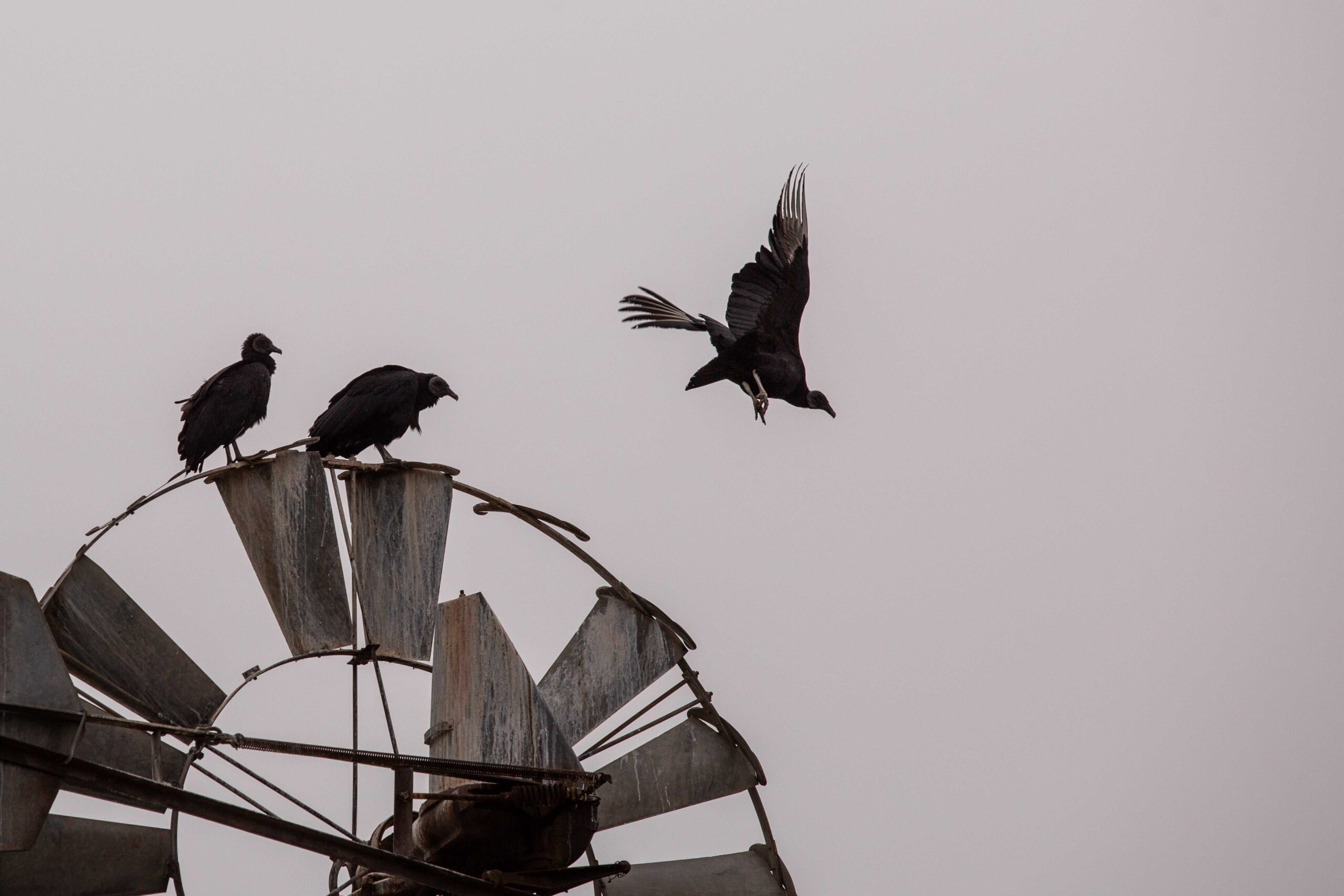
Still others study the progress of insects that invade the bodies inside wire cages: flies and maggots, yes, but “buzzing bees, grasshoppers, and butterflies will come and get a protein meal,” said Danny Westcott, the facility’s bearded and soft-spoken director. (The bodies are in those cages to ward off larger scavenging animals.)
Westcott, 58, is a native Kansan who first got involved in anthropology to study Native Americans and U.S. history and prehistory. On the wall of his office back in San Marcos, he keeps a cartoon of himself depicted as a skeleton that dates to a period he spent at the Smithsonian in Washington, D.C. Later, as a grad student, he studied at the world’s first “body farm” at the University of Tennessee and got sucked into forensics .
He came to Texas State a decade ago to lead this unique place. The Body Ranch is one of two such facilities in the state and the only one connected to a forensic anthropology program.
In a short time, students and even visitors see more bodies than many forensic investigators encounter in years, Westcott said. This is one of at least seven so-called body farms in the United States—and the largest in terms of acreage. Nearly all of the research here is rapidly applied. It’s intended to help find murdered and missing persons, identify bodies, and provide clues to help solve real cases. Scattered around the ranch are metal storage pods used to simulate hotel room deaths and a line of metal chassis and car seats that have been filled with bodies and then set aflame to simulate highway accidents. The university recently received a $1 million grant to study deaths and decomposition specifically of obese accident victims to help improve fire investigations.
The difference between the corpses at the Body Ranch and those found at real-life crime scenes is that most of these donors died natural deaths.
Up on the ridge, the red-haired woman lying in the cage appears at peace; her skin was pale under the winter sun. But by the afternoon, the mist had burned off, the sun was blazing, and flies were beginning to visit, buzzing around her face and exploring the inside of one nostril. She did not move, but these insects were already beginning to transform her body.
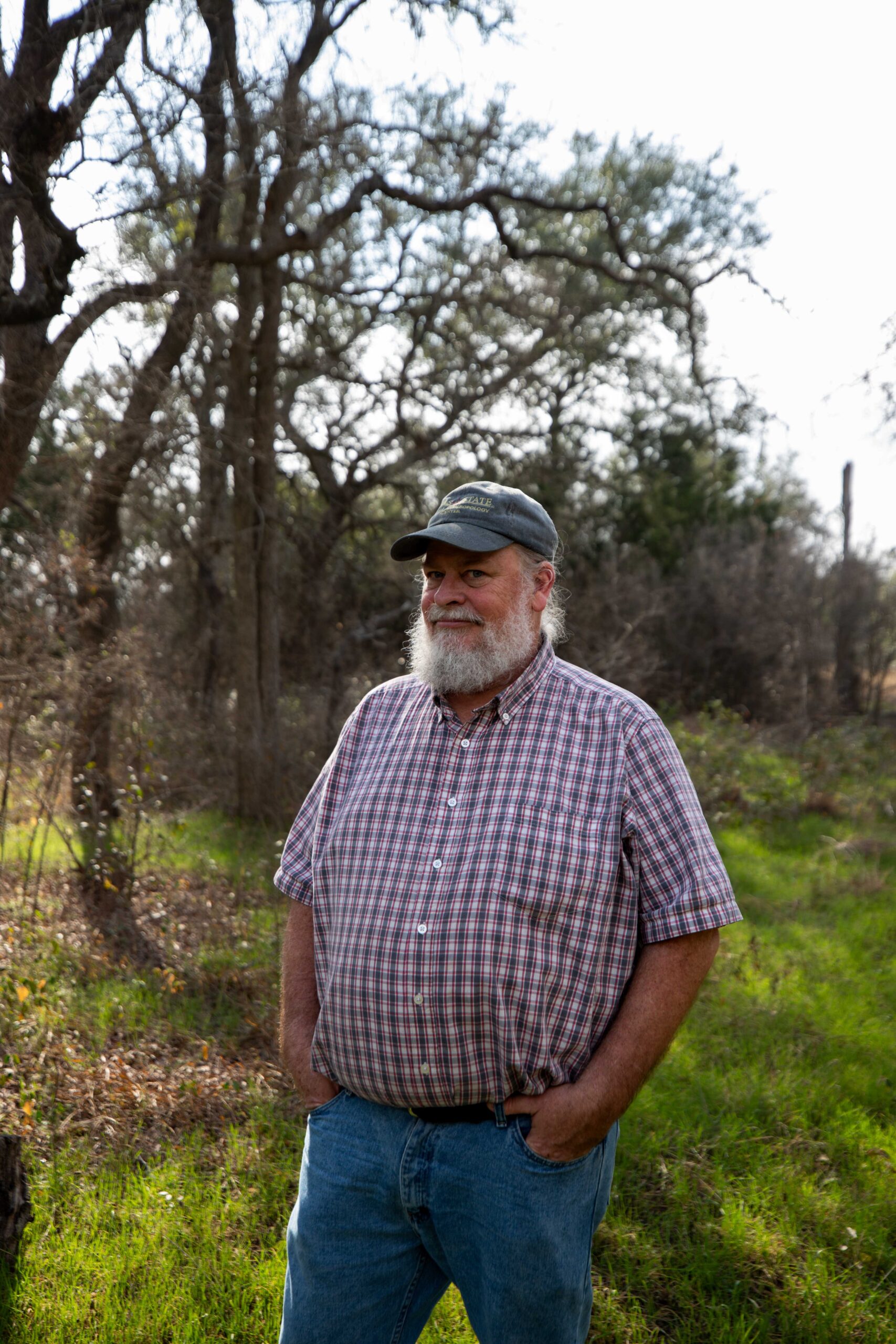
At 35, she’s one of the younger residents. Her death was sudden. Most donors to the Body Ranch are both older and whiter than U.S. crime victims. The average age is about 67, only nine years older than Wescott himself.
Westcott has decided that he too wants to be a permanent part of this place. He’s picked out a grassy clearing frequented by deer but less accessible to vultures. “When I die, this is where I want to go,” he said, standing in a mini-meadow ringed by live oaks. It’s a spot where other bodies have been buried and exhumed as part of experiments and training. He figures this as the best place for him to keep participating, even after his own time comes. “I want to be put in the collection.”
For him and other donors, it’s a scientifically attractive, more eco-friendly, and far less expensive option than the usual U.S. funeral rituals. Already about 850 dead people have participated; 1,500 more living donors are preregistered.
None of the Body Ranch donors, from a few infants to a woman of 107, ever leave. After a stay on the ranch, their bones are retrieved, carefully cataloged and stored in the forensic anthropology department’s growing skeletal archive. In a lab elsewhere on the ranch, Texas State students separately store and study bones, clothing, and personal effects of immigrants whose bodies were found near the border in Texas; these they help identify and, with luck, eventually return to families.
By afternoon, investigators visiting for the January workshop again divided into teams, this time to practice searching for clandestine burials.
Just below the hill where the red-haired woman reposed in her cage, members of one group began passing around a long stick called a probe and tapping the ground to locate looser soil. Soon, they found a likely spot. They poked their plastic flags into the ground to mark the outlines of what seems to be a bathtub-shaped grave. Then they dove in with shovels, but the rocky ground was harder than it seemed.
“Think of all the movies on Indiana Jones where they used whisk brooms. This is a workout!” said one Austin cold case detective (who asked not to be identified because, in her work, she sometimes receives threats).
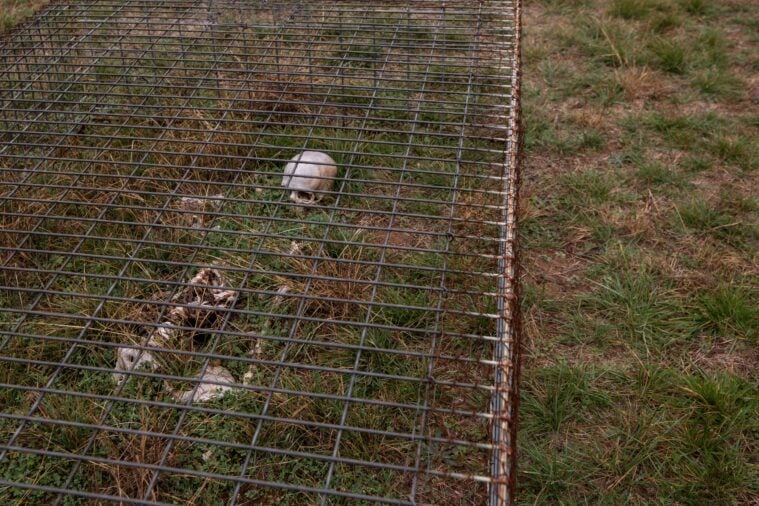
Almost simultaneously, the second team found a shallower grave only a few feet away, exclaiming and taking photos as they unearthed a single long bone and a clump of human hair.
Meanwhile, the third group had discovered another grave among the rest. They put down flags, but their hole seemed small and oddly shaped. They leaned over to dig with spades. After spotting the first bones only a few inches down, two members of the group switched to hand trowels and others fed extra dirt through a sieve.
Slowly, they discovered a full skeleton, a figure hunched over in death.
Serina Nelson, a crime scene investigator from Carlsbad, New Mexico, held up her trowel and bent to contemplate the skeletal form cradled in this grave without touching it. Nelson lifted her head, her dark curly hair flying in the January afternoon’s surprisingly high humidity, and studied those bones. Then she crouched down to assume the corpse’s final posture.
Many of the ranch residents will remain for months or years, but soon Nelson from New Mexico, cold-case homicide detectives from Austin, and supervisors of forensic investigators from California will return home to use these lessons on real crime scenes. “The hands-on, it’s just been so helpful,” Nelson said.
There’s the way the small bone of a toe or a rib can seem like a stone when coated with caliche clay. The way a body, as part of the normal process of decomposition, can involuntarily hurl out its arms after a body decomposes, bloats, and then the bloating subsides.
And the way a small group of men and women, armed only with rubber gloves, shovels, and a pole, can find a hidden grave with its sunken outlines, gentle humps, and markedly green grass. “Plants love decomposition; it’s sort of like fertilizer,” Wiedenmeyer tells her group as they huddle around their find.
Drones that overfly these grounds for other experiments confirm: The grass is always greener at the Body Ranch.
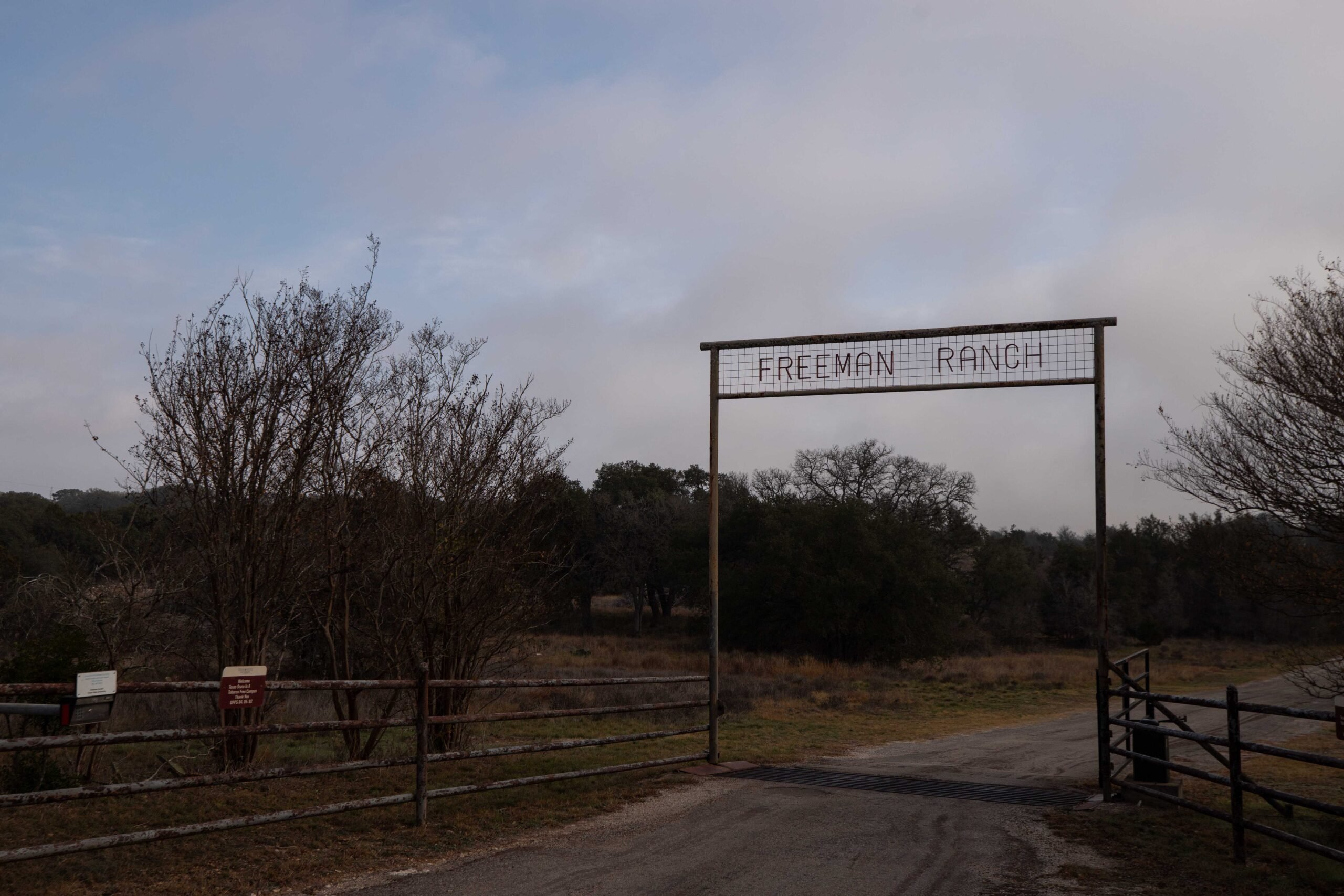
You May Also Like

Loon Star State
Loon Star State: ‘When You Assume…’
by Ben Sargent
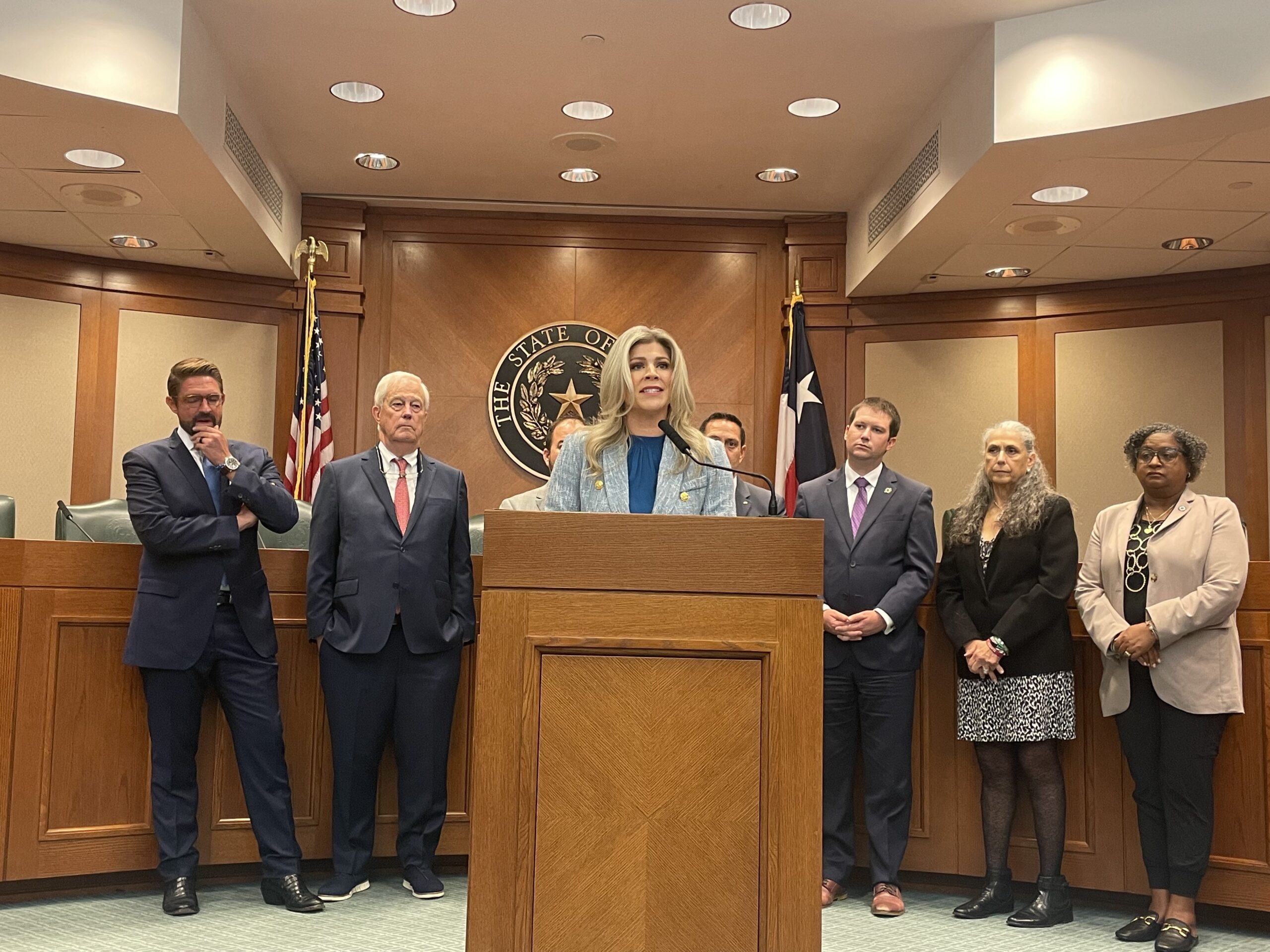
Criminal Justice
Bipartisan Legislators Join Calls for Clemency for Robert Roberson
The condemned Texas man was convicted of killing his daughter in 2003 based on an outdated ‘shaken baby syndrome’ diagnostic process.
by Michelle Pitcher

Environment
Pipeline Explosion in Deer Park Reveals Hidden Hazards Texans Face
The pipeline’s owner is “the same company that got $2.4 billion richer when Texans froze to death during Uri,” one activist points out.
- KSAT Insider
- KSAT Connect
- Entertainment
Death 101: A look inside Texas State University’s body farm and forensic anthropology center
Field and lab training help researchers learn how to solve crimes and investigate human decomposition.
Erica Hernandez , Courthouse Reporter
Misael Gomez , Photojournalist
SAN MARCOS, Texas – Helping the forensic science community with research and hands-on training is what the Forensic Anthropology Research Center at Texas State University is all about.
From identifying bodies of immigrants found along the border to research on human decomposition, this program is teaching students and investigators how to solve crimes.
The department is made of a couple of labs and an outdoor research facility that is also known as the body farm.
“Our goal is to provide casework, so we have a service, provide outreach, we are trying to educate the community as well, and then we have education components with our own students and also workshops for law enforcement, and then, of course, the research,” FARF director Dr. Daniel Wescott said.
Every body researched at the facility was donated. In fact, people have to register to donate their bodies before they die. Currently, there is a list of about a thousand people.
Once a body arrives it goes through the intake lab to be looked at and logged. Then its placed to be studied at the body farm.
The 26-acre outdoor human decomposition laboratory is the largest facility of its kind in the world.
The bodies are laid out in various outdoor elements and in different scenarios -- some on the surface in the sunlight, in the shade, in shallow graves, deeper graves, or mass graves.
All of this is done to learn about human decomposition and to train in methods of searching and recovering human bodies.
“They will all eventually be processed down and the skeletons will go back to the lab,” Wescott said.
Once the study outside is done the bodies are cleaned and the bones are taken to the lab for further research and to be placed in a skeletal collection.
The facility also provides hands-on training to law enforcement and death investigators from across the world.
Yearly workshops are held that help investigators get hands-on training on human remains recovery, forensic art and fire/death investigations.
Scenarios are put in place to give trainees the opportunity to try to recreate how to actually solve a death investigation.
“Their job is to figure out what all happened,” Wescott said.
Not only are students in the department learning, but through the workshops, the department has become partners with law enforcement agencies.
Researchers from Texas State are often called to help in real-life investigations or body recoveries.
All of this is valuable in helping forensic science continue to evolve and, most importantly, solve crimes.
Copyright 2021 by KSAT - All rights reserved.
About the Authors
Erica hernandez.
Erica Hernandez is an Emmy award-winning journalist with 15 years of experience in the broadcast news business. Erica has covered a wide array of stories all over Central and South Texas. She's currently the court reporter and cohost of the podcast Texas Crime Stories.
Misael Gomez
Misael started at KSAT-TV as a photojournalist in 1987.
Recommended Videos
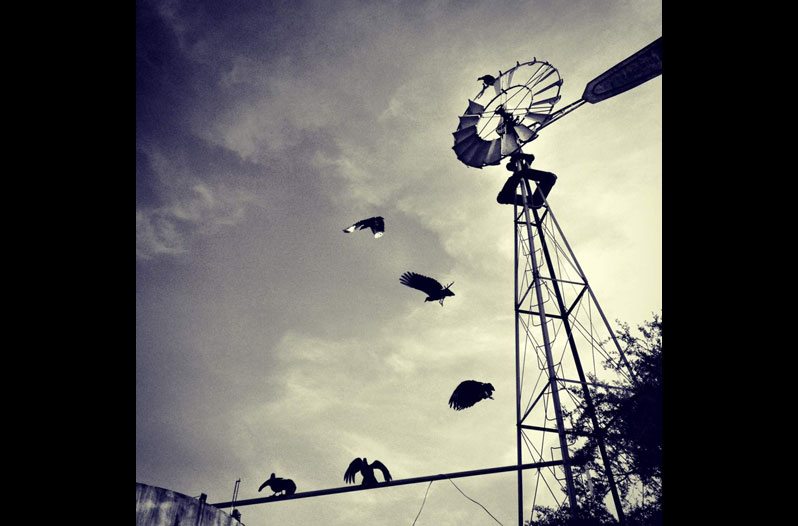
At the Texas ‘Body Farm,’ They Plant Human Corpses
Situated on the edge of the Balcones Canyonlands in the heart of central Texas is an unusual farm. If you were to stumble upon this particular farm, you wouldn't find corn or cotton, you'd find human remains. In cages. This isn't the plot of a horror movie and there's no need to call law enforcement. It's a legitimate human decomposition research facility known by locals as the Body Farm.
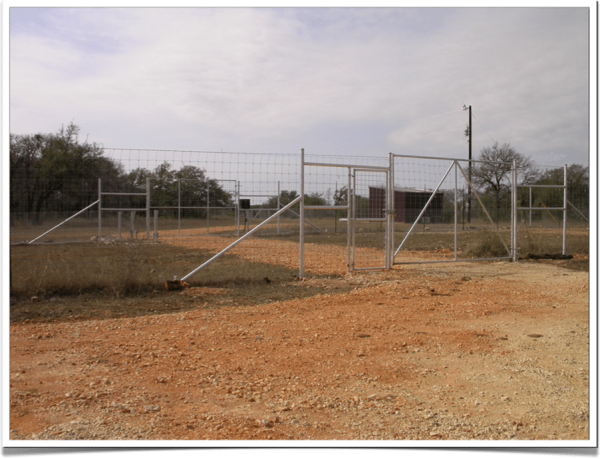
The entrance to the FARF body farm Image via Texas State University
Formally known as the Forensic Anthropology Research Facility (FARF), the Body Farm is a part of The Freeman Ranch, which is a larger research operation of Texas State University in San Marcos .
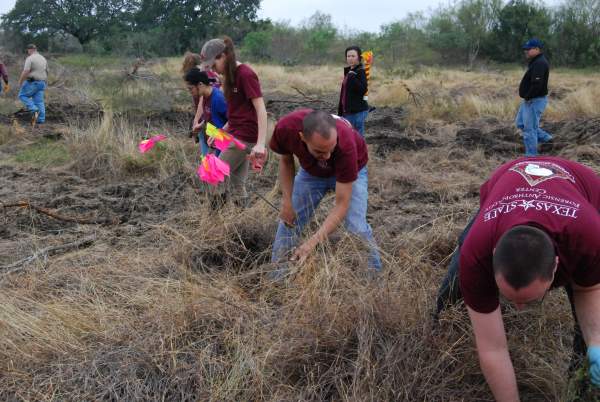
Students in the field Image via Texas State University
Here, students study the differing effects of the elements on a deceased human body. Scientists can learn a lot from observing the decay of the human body. The knowledge gained at the farm impacts criminal court cases as well as medical science.
Students at the Forensic Anthropology Center also study the differing effects of the elements on human corpses. Scientists can learn a lot from observing the decomposing of the human body. The knowledge gained at the farm impacts criminal court cases as well as medical science.
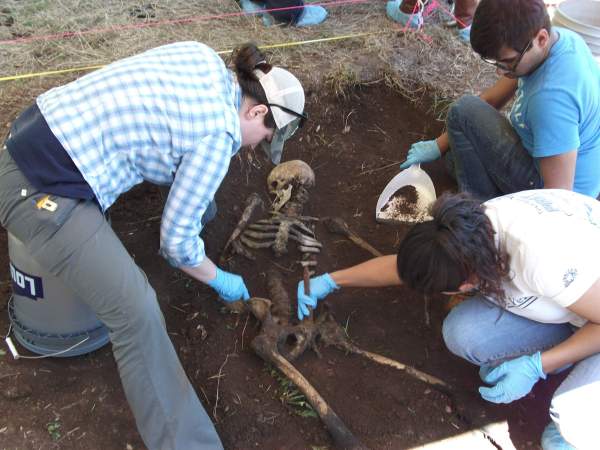
Students examining human remains Image via Texas State University
Though it might seem odd to cage a dead body, the cages are there to prevent wildlife (yikes, vultures) from getting to the cadavers. That way, scientists can study insect and microbial decay alone. Some of the bodies are left in the open, however, in order to better understand how wildlife impacts decomposition.
If you think this all is horrifying, then it will shock you to learn that there is more than one Texan Body Farm. In fact, there are six body farms nationwide. The University of Tennessee established the first one in 1980. There are also facilities in Illinois, North Carolina , and Colorado. Body farms are not legal in Europe. The first one outside of the United States opened just last year in Australia.
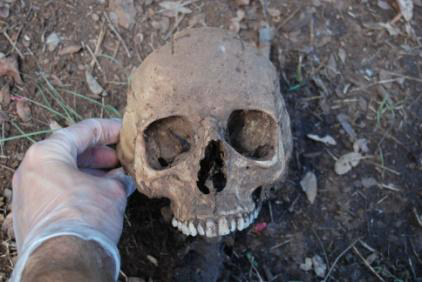
A human skull after decomposition Image via Texas State University
Located outside Huntsville, Sam Houston State University, known for its Criminal Justice school, runs the Southeast Texas Applied Forensic Science Facility or STAFS Facility. Though it's a comparable set up, the STAFS Facility yields dissimilar results from its Central Texas counterpart. That's because the subtropical climate of the Texas Gulf Coast has a different impact on decomposition.
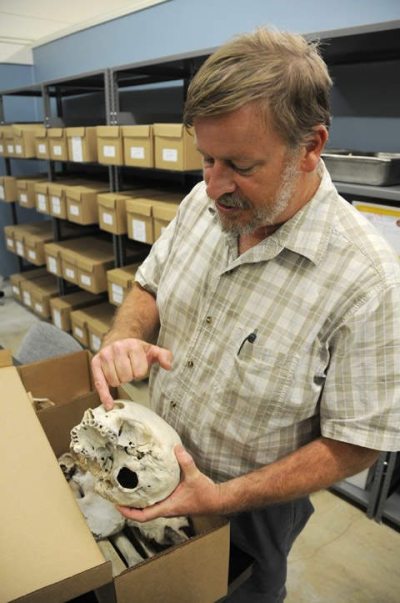
Image via Texas State University
There are currently about 50 bodies in various states of decay at the Freeman Ranch facility. They won't run out any time soon though. There are around 200 living people who plan to donate their bodies to this research effort once they pass away.
If you have a strong stomach and want to see some pictures from inside the FARF at the Freeman Ranch, check out this article from the Texas Tribune .
This article was originally posted on August, 10 2017 but has since been updated.
Now Watch: You Can Sleep and Eat at the Texas Chainsaw Massacre Gas Station
You might also like.

Country Lifestyle
Did you know there's a snake farm in the texas hill country.

Ranch & Garden
No one wants to buy johnny depp's horse farm in kentucky.

15 Eerie Abandoned Buildings Across Texas

Exxon Wants to Build a $9.3 Billion Petrochemical on Farmland Near Corpus Christi
Forensic Anthropology Center
- Affiliated Faculty/Researchers
- Human Remains Recovery Course
- Forensic Anthropology Methods
- Forensic Entomology
- Human Osteology
- K9 Human Remains Detection
- Identifying Human vs. Nonhuman Bone
- TEEX Skeletal Death Investigation Course
- Forensic Art: Forensic Facial Reconstruction Sculpture
- Forensic Art: Drawing to Depict the Deceased for Identification
- Competency/Proficiently Assessment
- Applied Biostatistics Using R
- Forensic Anthropology and Osteological Analyses
- Operation Identification
- Researchers
- Forensic Anthropology Research Facility
- Osteology Research and Processing Lab
- Grady Early Forensic Anthropology Laboratory
- Laboratory SOP
- Graduate Courses
- Frequently Asked Questions
- FACTS Summer Scholar Program
- Whole Body Donation
- FARF Research Request Form
- CT Service Request Form
- Bone Sampling Request Form
- Skeletal Collection Research Request Form
- Current Students
- Faculty & Staff
- Family & Visitors
If you represent a school, community group, or other institution and you are interested in learning more about the Forensic Anthropology program at Texas State or Forensic Anthropology generally, we would be happy to provide outreach lectures and/or private workshops to your organization.
We can visit you at your institution or host your group at our Grady Early Building (max capacity 30 participants). Please contact Dr. Sophia Mavroudas ([email protected]) for more information.
TOURS OF THE FORENSIC ANTHROPOLOGY RESEARCH FACILITY ARE NOT ALLOWED
The Forensic Anthropology Research Facility is a closed research facility, and as such there are no tours or visits allowed . Due to the sensitivity of ongoing research and the privacy concerns of body donors and their families, we do not allow public access to the Forensic Anthropology Research Facility or the Osteological Research and Processing Laboratory
- True Crime Blog
- A&E Classics
- A&E Crime Central
- Link A&E on facebook
- Link A&E on twitter
- Link A&E on youtube
- Link A&E on instagram
- Link A&E on tiktok
What’s It Really Like at a Forensic Body Farm?
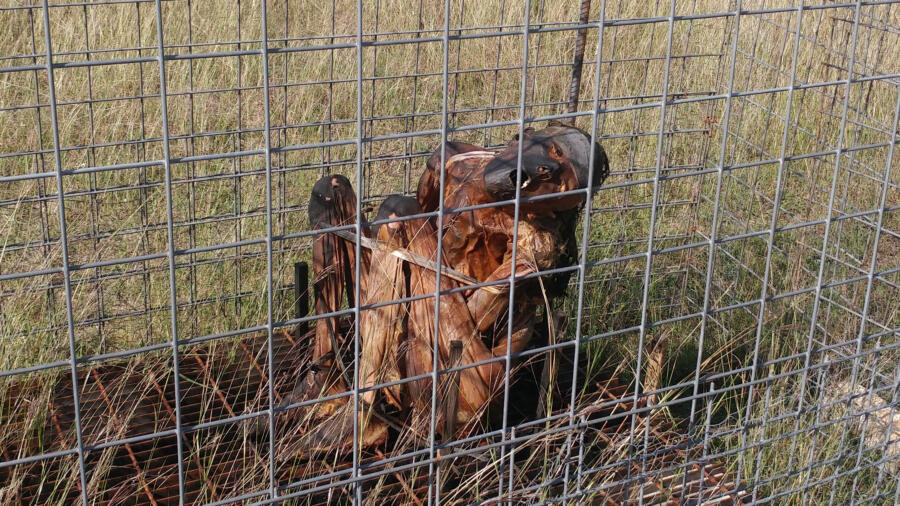
Suzy Spencer
Website Name
Year published.
https://www.aetv.com/real-crime/whats-it-really-like-at-a-forensic-body-farm
Access Date
September 20, 2024
A+E Networks
It’s the perfect autumn day for a stroll through a body farm. The sky is blue. The breeze is soft. Wildflowers are blooming. Butterflies are flitting. A big buck leaps across a two-lane country road. I gasp. The deer nearly collides with the blue Mini Cooper driven by Dr. Daniel J. Wescott.
Wescott is the director of the Forensic Anthropology Center (FACTS) at Texas State University in San Marcos, Texas, and I am following him to the school’s 4,200-acre Freeman Ranch for a tour of its 26-acre forensics farm, commonly referred to as a body farm. And a dead buck isn’t the body I drove out here to see.
I sniff the air. I am expecting a putrid odor. I don’t smell a thing. Instead I find myself listening to the soft rustle of the scrub oak leaves in the breeze, until Wescott hands me a pair of CSI-style white booties.
But the dirt path we follow seems neat and tidy until we stop beside a corpse. It resembles jerky made from a turkey the size of a human.
“As you can see, this one has been completely skeletonized,” says Wescott. Because of that, he explains, it’s caged so that animals can’t scatter its bones, and it will be picked up in a few days for its remains to be processed. That means the cadaver will be simmered down to the bones. Then the bones will be numbered, measured, catalogued and placed in a cardboard box.
We step to the other side of the trail, where the body parts aren’t caged, and Wescott points into the weeds and wildflowers. “Here’s a shoulder. Here’s hip. There’s a leg. … See where the stake is? That’s where the head would have originally started.” The head is now 10 yards from the stake—moved by vultures. FACTS researchers study vultures and corpses to determine how long it takes the bird to clean a body—four or five hours, usually—and how far it scatters the bones. This data helps law enforcement determine time of death.
Wescott and I move back to the path and take an easy right around some bushes, when he slows and notes that we’re about go into a section “with a little fresher ones.”
I stop suddenly. “Wow.” I stare at one of those fresher bodies.
“This is bloat,” Wescott says.
The body is huge. Its male private parts are blown up like a balloon.
Wescott points out the mounds of maggots working like ants in the mouth, nose, eyes and genitals. Flies, he explains, like to lay eggs in natural orifices.
“It looks like plastic,” I say. Plastic for the torso, turkey jerky for the limbs.
“You get what you call skin slippage,” he says. “You’re getting discoloration. You get what’s called marbling.”
It looks like exotic amber—a black, orange, and palomino-colored Buddha..
“It varies from individual to individual,” says Wescott.
As the autumn breeze rises and falls, I catch a faint whiff of the rotting bodies. It’s a vaguely sweet smell. Sweet and sour. Bittersweet?
“There is a smell,” says Wescott, “but it’s only during the bloat stage. What you’re smelling is the bacteria activity.”
My stare moves from the size and stench of the Buddha man to a tiny corpse with wiry blonde hair and dark roots. I can’t tell if it’s a child or small woman.
“It was a very young woman,” he says—23 years old, 80 pounds, died of a drug overdose. Her body was donated by her mother.
“How come she looks like she’s screaming?” I ask.
“Because the skin shrinks,” he answers.
I feel she needs to be comforted and protected. I don’t want to leave her. But there are 50 or more bodies strategically placed throughout the farm—some face up, others face down, some wrapped in tarps, some in clothes, others not and some buried.
Wescott leads me to a field of the buried ones.
My untrained eye can’t spot a single burial site. His eyes can. So can a drone fitted with a near infrared camera.
“When you look at a photograph in near infrared, the rich organic soil comes out as really dark and vegetation comes out as really white,” he says.
He points out dead grass that looks burned from what he calls purge fluid. “We call it a cadaver decomposition island. As you can imagine, it’s very organically rich soil, because it’s basically the intestines and all that stuff. …When [the body] first goes out, it has a lot of ammonia in it, so it kills off the grass. But as the bacteria starts to break down that ammonia into useable nitrogen, it actually acts like fertilizer and then you’ll get this really lush growth around it. So we can pick up these cadaver decomposition islands really well [on the camera].”
We round another corner, and I stop again. I can’t stop staring. In front of me is an upright body that’s bound—its knees to its chest, its head turned to one side, its mouth open. It looks like sculpture. Art. It’s mounted on a platform—which makes it look even more like a sculpture. It’s mounted because the researchers want to dry out the skin. “This allows the fluids to drop down,” Wescott explains.
FACTS students are mummifying the body to help archaeologists study burial practices in the Caribbean. Some archeologists think islanders bound the dead into a seated position, mummified their bodies and then buried them in small pits. So that’s exactly what the Freeman forensic farm researchers will do. Eventually, they’ll excavate the body to see if it resembles what archeologists found in the Caribbean.
I continue to stare at the seated woman. “That one has a voice,” I say. I want to stay and listen her.
Instead, Wescott tells me to put my booties in the trash.
I do, silently, but what I want to say and don’t is that if I can’t stay and listen to the sculpture woman and if I can’t stay and protect the young addicted woman, I want to at least keep my booties as a souvenir. But that defeats the purpose of wearing them—to make sure I don’t take anything home. Even so, I am taking something home—memories of a beautiful fall day strolling among the wildflowers, butterflies and decomposing bodies. I just hope I don’t hit a deer on the way back.
Read more:
Why It’s OK to Leave Dead Bodies in the Woods, and Other Strategies for Not Messing Up A Crime Scene
Cold Cases Aren’t Closed Cases
How Accurate Are Crime Scenes on TV Crime Dramas? A Retired CSI Detective Tells All
It’s Tough to Get Fingerprints in the Winter: Challenges and Surprises About Crime Scene Investigating
- crime scene
- forensic anthropology
Related Content

Can’t get enough of the True Crime Blog?
Never miss a story by signing up for the newsletter now.
- Privacy Notice
- Terms of Use
Need help with the site?
WELCOME TO STAFS
The Southeast Texas Applied Forensic Science Facility (STAFS) is a state-of-the-art research, education, and training center designed to advance academic and technical knowledge in the application of anthropology, human anatomy, forensic science, biology, and chemistry. Bodies donated to the STAFS facility are a precious asset, and are a pivotal component of our research and teaching activities. The skeleton of each donation is also a very valuable asset that is permanently accessioned to the STAFS Skeletal Collection for continued research, education, and training by scientists, investigators, students, law enforcement officials and forensic practitioners.
We have two options: Living Donor, if you are interested in donating your own body after you pass away; and Next of Kin, if you have a loved one who has already passed away.
LEARN MORE »
STAFS offers a variety of training opportunities that include unique hands-on training to law enforcement, educators, college students, as well as criminal justice professionals.
STAFS is dedicated to providing research opportunities for national and international investigators, students, and academics pursuing medical or scientific research.
Forensic anthropology consultations, including determination of forensic significance and skeletal analyses, are available to law enforcement agencies on a case-by-case basis.
"Finis coronat opus" This Latin phrase means, "the end crowns the work." But what does this really mean? At STAFS, the crown is the manifestation of what one did in life, and the activities that are recorded in the human physical body. It may be an illness such as tuberculosis that can leave lesions on the skeleton, or a broken arm from playing high school football. At the end of life, our physical bodies are a testament to our life experiences – our crowning glory.
As scientists, we can examine the end product (or crown) of that individual’s life and we can obtain very useful information to learn from and pass on to others. Students can examine the effects of some diseases or injuries that leave indicators in the soft or hard tissue of the body. Other biological features, pathologies and trauma can be used to aid in the identification of an individual or missing person. Students and practitioners can gain invaluable knowledge and understanding from our bodies through continual education, research, and training.
At STAFS, the crown of one's life, the human body, is highly valued and is treated with dignity and respect. The body is essential in the continual development and improvement of applied scientific and forensic techniques.
INTERDISCIPLINARY STUDIES
Anthropology.
STAFS facilitates forensic anthropology and taphonomic research using its outdoor decomposition facility and diverse skeletal collection.
Biologists access STAFS resources to investigate topics such as the microbiome, forensic entomology, forensic genetics, proteomics, and human anatomy.
STAFS provides an opportunity to conduct research across the major forensic disciplines including forensic biology, chemistry, and physical/pattern evidence.
Research examining soil chemistry, geology, toxicology, and other decomposition-related chemistry projects are conducted at STAFS.
MISSION / VISION STATEMENT
Our mission is to facilitate the advancement of forensic science, anthropology, biology and chemistry through the use of our willed-body donations to enable innovative research, teaching, and training. STAFS's vision, commitment and service is to support research, develop new techniques and skills, and extend our knowledge, so that academics, forensic science practitioners, and law enforcement can work together to bring a voice, a comfort, or peace to others.
Advancing knowledge in the application of anthropology, human anatomy, forensic science, biology, and chemistry.
Hours of Operation: 8am-5pm, Monday-Friday Email: [email protected] Phone: 936-294-2310 PO Box 2525, Huntsville, TX 77341
Want to make a Donation? View our Summer Trainings Interested in our Research? Casework and Consulting Want to Volunteer/Intern?
Sam Houston State University | The Texas State University System
- Influencers
- Become an Affiliate
- Accessibility
- Terms of Use
- Privacy Policy
- Modern Slavery Report
- All Stories
Remains of the Day: How Body Farms Advance Science
At this texas body farm, dozens of bodies are decomposing in the name of advancing scientific research..
If you were to come across dozens of human corpses in an open landscape, you might think you’ve just stumbled into a horror movie. But, Believe It or Not!, you’d actually be in a classroom.
This is the Forensic Anthropology Research Facility (FARF) , also known as the “body farm,” at Texas State University’s Freeman Ranch in San Marcos, about 35 miles from Austin.
At this 26-acre facility, the largest of its kind, students research the decomposition of human bodies left outside, exposed to the elements, and sometimes animals. Their work helps law enforcement, anthropologists, and archaeologists solve the mysteries of how, when, and where people died.
Body Language
There are currently between 70-80 bodies being studied at FARF, says Danny Wescott, Director of the Forensic Anthropology Center at Texas State (FACTS), via email. People actually donate their bodies for this scientific research and, Westcott says, they never have too many.
As one might imagine, there’s quite a bit of work to do.
“Bodies are placed in various locations and can be clothed, unclothed, or wrapped, depending on the criteria for the research being done,” says Wescott.
There are currently more than 19 projects being studied at the facility, by FARF and other researchers.
One FARF project is measuring the differences in decomposition rates between bodies that have been frozen versus not frozen. This is a project that will help FARF with the protocols of its own research.
“Can we freeze a body for storage and then use it for research at a later date?” Wescott investigates, should the need ever arise. “There is some argument that a frozen body will decompose from the outside in, while a nonfrozen body will decompose from the inside out.”
But they have found that once a body is thawed out, it will decompose at the same rate as one that was never frozen. “The freezing doesn’t seem to be enough to cause rupturing of cells or anything,” he observes.
Breaking It Down
Several projects involve the “thanatomicrobiome,” or the microbes, including worms and bacteria, that colonize us once we’re dead.
“Microbes are responsible for much of the internal organ decomposition and also for attracting flies to the body,” Wescott says. The breaking down of tissue by bacteria gives off that distinctive decaying-corpse scent , which brings the bugs, so these microbes can help determine the postmortem interval, or PMI—the time since death.
Another project conducted by Aaron Tarone of Texas A&M University is called, “Ants as Indicators of Clandestine Graves.” It sounds terrifically Poe-like to us outsiders, but it’s a helpful resource for law enforcement and other disciplines. Technology, like ground penetrating radar, can reveal where a body has been secretly buried but determining what that body is is another matter. Looking at the stomach contents of ants colonizing near a hidden grave may help reveal whether the remains are human or another animal.
“This is in the early days of research,” Tarone says, via email, and a facility like FARF provides “important dimensions and perspective to these kinds of projects.” Some aspects of this kind of work can be done in a lab, “or in the field with non-human models,” Tarone says, “but when you get to the point of wanting to establish real-world situations, the facilities like San Marcos are indispensable.”
Deer in the Headlines
Sometimes cages are put over the bodies to stop scavengers from interfering with them, but in 2014 scavengers were the point. The facility was researching their impact on cadavers, including the impact vultures have on determining the time of death. This particular study made news when a camera caught an image of a deer gnawing away on a human rib bone. It was already known that deer chew on bones—their teeth leave a tell-tale forked pattern on bones, says Smithsonian Magazine . This was just the first instance of one chomping on, well, one of us.
Believe It or Not!, there are 7 body farms in the U.S. and recently, at the Forensic Investigation Research Station at Colorado Mesa University, feral cats were seen on camera nibbling on the human remains .
Body farms usually have high fences to keep larger scavengers out, but smaller scavengers are recorded on infrared cameras . Researchers at the Colorado facility reported that cats prefer to hunt, and cases of them scavenging are very rare. Those who opted for the food in front of them at the body farm tended to prefer the soft tissue of the arm and shoulder. Keep that in mind the next time you’re cradling little Mittens.
Because it’s a closed research facility, visitors aren’t allowed at the Freeman Ranch body farm. One day, though, if you choose to donate, you could reside there forever. Or at least until the cats show up.
Share This Story
About The Author
Ripley's Believe It or Not!
Step into the world of Ripley’s Believe It or Not!, where truth is always stranger than fiction! Bui…
By this author
Stop Giving Coral Reefs So Much Grief
The More You Know: Mangroves

The A-maize-ing Corn Palace
Contrary to popular belief, coral is actually alive!
There's more that lies beneath the surface of these gravity-defying habitats!
Okay, we have to admit, this place is a little corny.
More on Places
Or explore our categories, have an amazing story.
At Ripley’s, we’re always in search of the unbelievable – maybe it’s you! Show us your talents. Tell us a strange story or a weird fact. Share your unbelievable art with us. Maybe even sell us something that could become a part of Ripley’s collection!
Read More Ripley's
Get lost in a vortex of weird and wonderful stories! Ripley’s twenty-first edition annual book is full of all-new, all-true stories from around the world.

September 19, 2024
Cartoon of the Day
Strong winds at Slope Point, New Zealand, have left trees with a permanent crooked shape.
Robert Ripley began the Believe It or Not! cartoon in 1918. Today, Kieran Castaño is the eighth artist to continue the legacy of illustrating the world's longest-running syndicated cartoon!
The Body Farm
Atlas obscura.
Calling William K. Bass's center for forensic observation a "farm" is, in a lot of ways a bit of a misnomer. Rather than growing any particular product, this farm is focused on how organic materials break down and decompose. Specifically, human cadavers.
Behind the University of Tennessee, a little outside of Knoxville, there's a 2.5 acre plot of land surrounded by a razor wire fence. This is the body farm, where forensic scientists and researchers learn about human decomposition. When William K. Bass first opened his center to study human remains in 1981, he had one dead body and a 16 square foot cage. By 2007, the farm had over 150 decaying specimen - many donated to the farm by interested volunteers. The bodies are placed in a range of scenarios to simulate various crime scenes. Clothed dead bodies, naked dead bodies, dead bodies underwater, dead bodies in cars, the list goes on. Bass's work on the Body Farm has revolutionized the field of forensic anthropology.
In addition to the extensive, ever-growing research, the Farm also possesses one of the largest collections of modern skeletal remains in the world, with over 700 in total and an additional 1000 future bodies willed to the project.
Full article
Atlas Obscura - A catalogue of the singular, eccentric, bizarre, fantastical, and strange out-of-the-way.
- Facebook Messenger
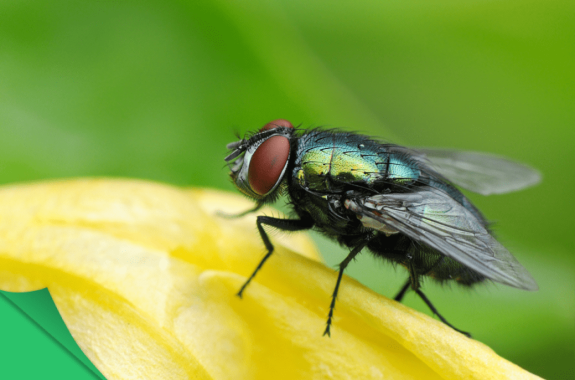
Smell That? It’s Forensic Entomology At The Body Farm
Grade level, life science, activity type:, forensics , hands-on activity , forensic entomology , insect development, warning graphic content: the videos and images below contain graphic documentation of real life, rotting human and animal corpses that may be disturbing to a younger audience..
A forensic scientist enters a crime scene and sees some flies, maggots, and a few beetles on and around a dead body. She immediately begins collecting them. Why? Because these insects can help investigators solve crimes!

Our understanding of the clues that insects can provide about a crime scene comes from research done at facilities called body farms. At these facilities, forensic scientists study how bodies decompose, and forensic entomologists study the insects that contribute to that decomposition.
In this activity, you will create your own mini-body farm to attract insects to a “corpse” (in this case, a piece of meat). Over the course of a week, you will observe the number and types of insects that arrive at your corpse. You’ll use that data to explore how crime scene conditions affect the decomposition of a corpse.
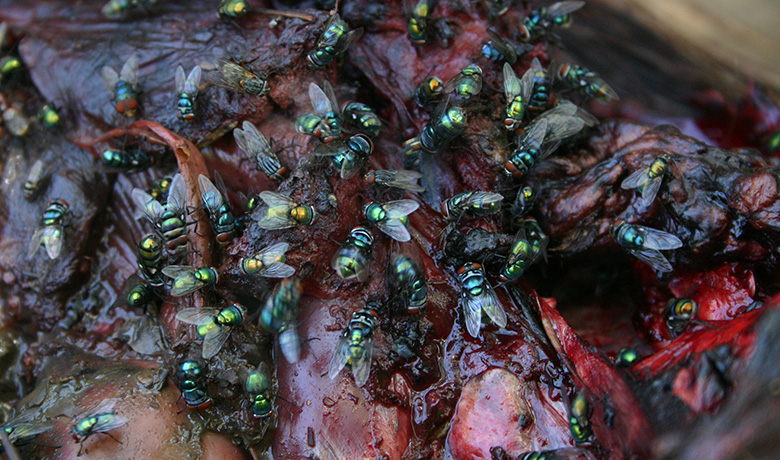
How do you use insects to solve crimes?
Anne Perez is a forensic entomologist and a lecturer at Ohio University, and she has intimate experience studying what insects can tell us about a dead body. In the following interview with Science Friday, Perez describes how forensic entomologists use insects to help them solve crimes. Listen to the audio clip below.
What does Perez’s job entail?
Print transcript.
- What kinds of insects typically show up at a crime scene?
- How do the arrival and life cycle of insects help forensic scientists understand a crime scene?
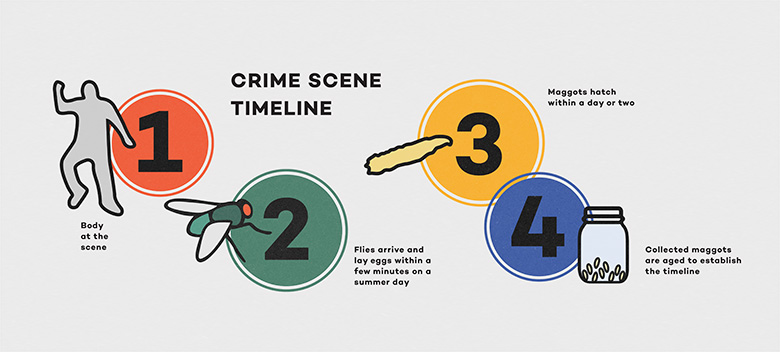
What is a body farm?
Body farms are research facilities where scientists study the decomposition of human remains in different types of settings. There are about a half-dozen in the United States and a few in Australia, with more planned in other countries.
One challenge to setting up a body farm is finding secluded fields away from densely populated areas so that the bodies won’t be disturbed. Another challenge is where to obtain corpses. While most body farms rely on human remains that have been legally donated, many use pigs because of their similarity in size and composition to humans. Anne Perez discusses body farms with Science Friday in the interview below.
This video shows the kind of research that can be done at Texas State University’s Forensic Anthropology Research Facility, a body farm located in San Marcos, Texas. You won’t be studying vultures like the forensic science students in this video do, but you will be inspecting insects!
- Based on the information in the interview with Anne Perez and in the video above, why do you think body farms are vital to forensic entomology?
If you want to learn more about Texas State’s body farm, check out its website , and watch this video .
Body Farm Insects
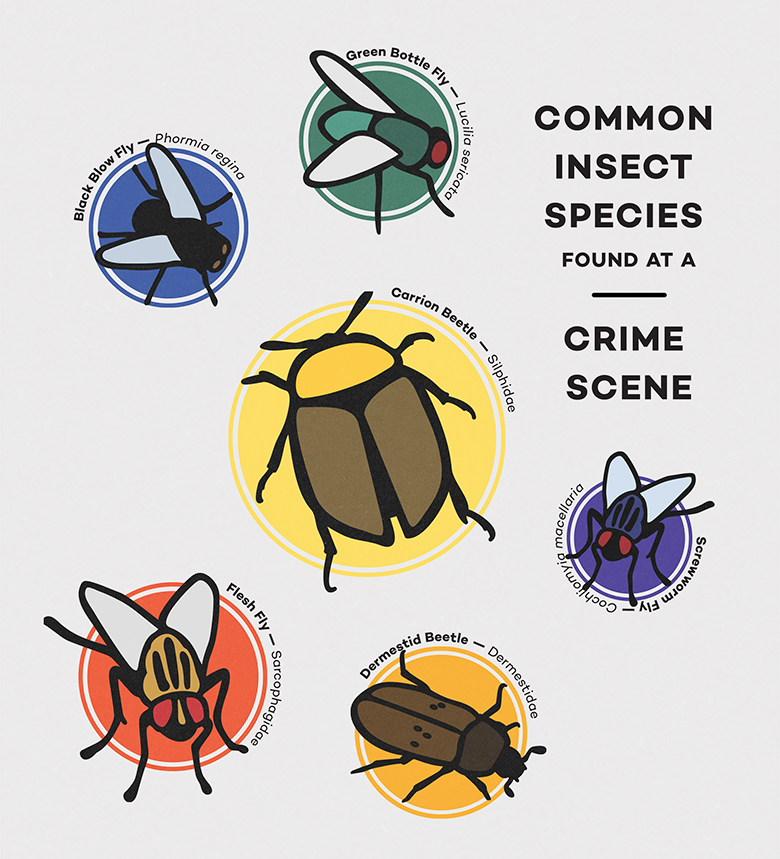
Insects, and especially flies, are attracted to the scent given off by a decomposing body soon after death. The most common insects you’ll find at a body farm are blow flies and flesh flies, either as “maggots” (their larval stage) or as adults, although you might also encounter beetles and other types of insects, too. Of the blow flies, one common visitor is the green bottle fly, an iridescent insect that you’ve perhaps noticed buzzing around trash cans.
What conditions affect the kinds of insects you see at a crime scene?
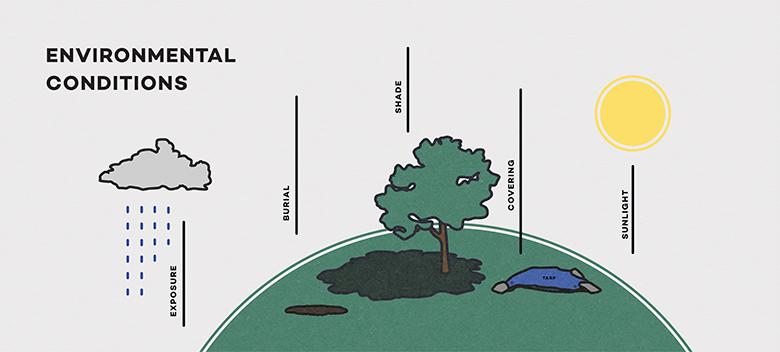
You will create a mini-body farm and investigate the types and ages of insects that are attracted to different simulated crime scenes. Pieces of meat or liver will serve as stand-ins for corpses. As Anne Perez mentioned, the microclimate of a crime scene affects insect turnout. Depending on the environmental conditions of the area, insects might have a difficult time finding the “corpses” in your body farm.
Before you start the experiment, you should decide where your body farm will be located. Depending on the crime scenes you study, you will need to choose both a sunny area and a shady area.
Tip: Conduct this experiment when insects are most active—that is, when temperatures are above 60°F during the daytime, and there’s little to no rain.
Materials Per Crime Scene Scenario
*Whether or not you need this item depends on the crime scene scenario(s) you choose.
Safety Notes
Raw meat can pose a health risk. Be sure to wash your hands before and after the experiment, and wear latex or nitrile gloves when assembling the body farm and inspecting the cups.
Assemble the Control Cups
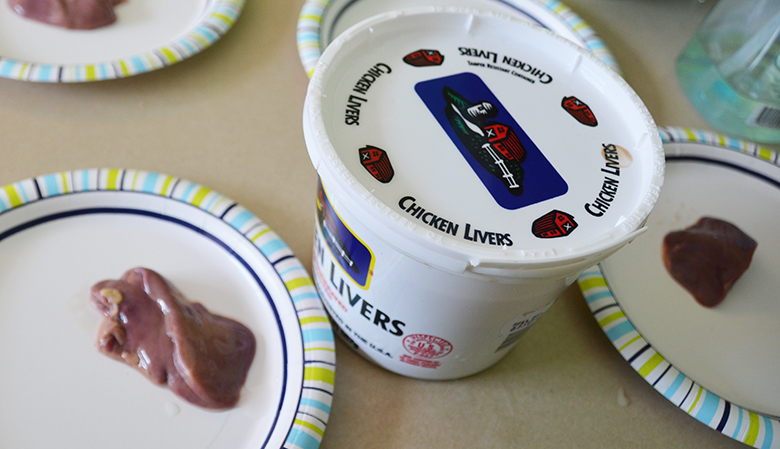
If you choose to do just a few of the crime scene scenarios, use one control cup for each crime scene. But if you are doing most or all 14 crime scenes, you can use one control cup per several crime scenes. (Note that there are two types of crime scene locations—sunny and shady—so you will need to put at least a couple control cups in each location.)
- Use a Sharpie to label the outside of a plastic cup with your initials and the word “Control.”
- Using forceps or plastic utensils, place one piece of meat/liver in the plastic cup. Do not add anything else to the cup.
Assemble the Crime Scene Cups
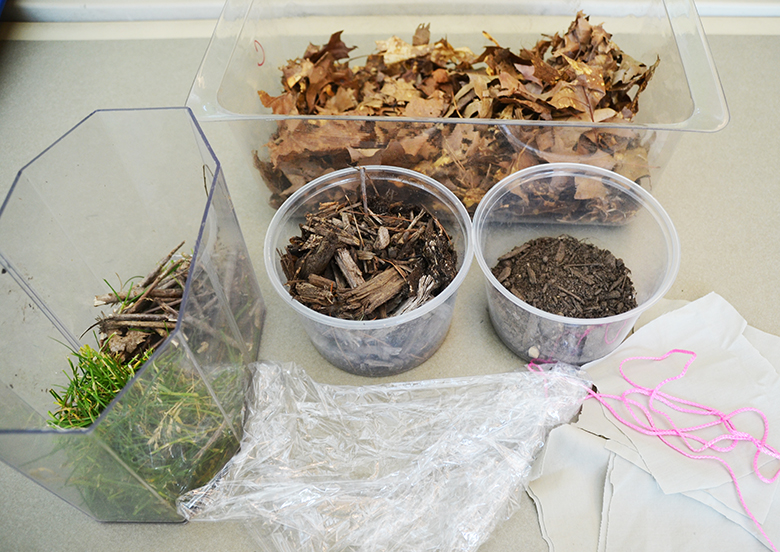
- Either individually or in pairs, select at least one crime scene from the list below to recreate.
- Use a Sharpie to label the outside of a plastic cup with your initials and crime scene case number.
- Record the crime scene conditions (e.g., sunny, shady, crushed leaves, etc.) on your Body Farm Data & Observation Sheet .
- Follow the case instructions to recreate the crime scene in your cup. When you place your cup outside, don’t forget to include the control.
- For each crime scene you recreate, predict the differences you expect to see between your control and crime scene cups. Do you think there will be more insects in one type of cup, or more variety of insects? What other predictions can you make? Record your predictions on your Body Farm Data & Observation Sheet .
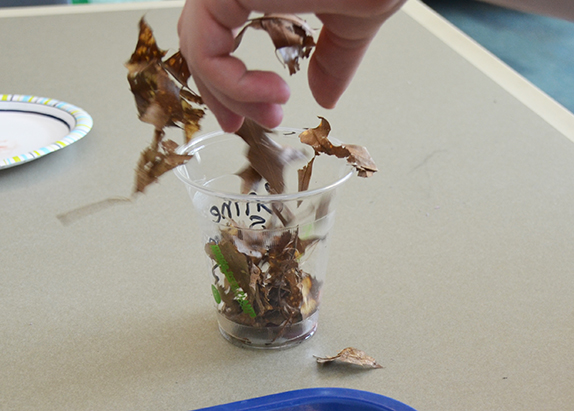
Crime Scene Case #1001
Description: Victim found in the woods, covered with a layer of leaves to hide the body. The area is shady, and the body is not exposed to the sun.
Recreate the crime scene:
- — Place a piece of meat in a cup.
- — Cover with a thin layer (approximately 1 cm) of crushed leaves.
- — Place your cup in a shady area.
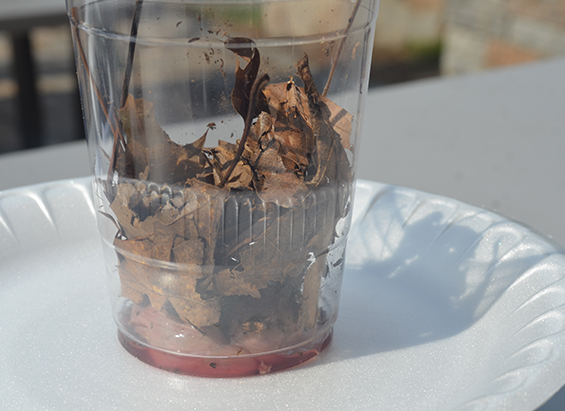
Crime Scene Case #1002
Description: Victim found in a field, covered with a layer of leaves to hide the body. The area is sunny, with no trees to provide shade.
- — Place your cup in a sunny area.
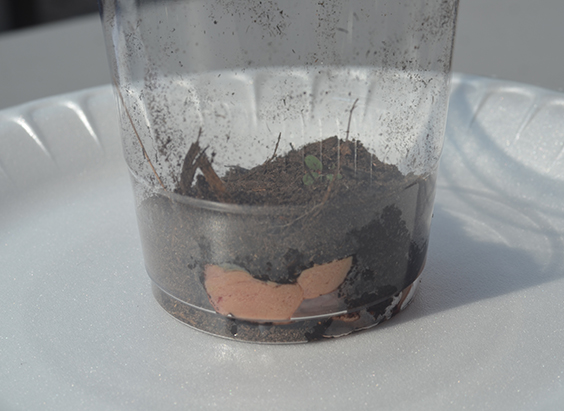
Crime Scene Case #1003
Description: Victim found in the woods, covered with a layer of soil to hide the body. The area is shady, and the body is not exposed to the sun.
- — Cover with a thin layer (approximately 1 cm) of soil.
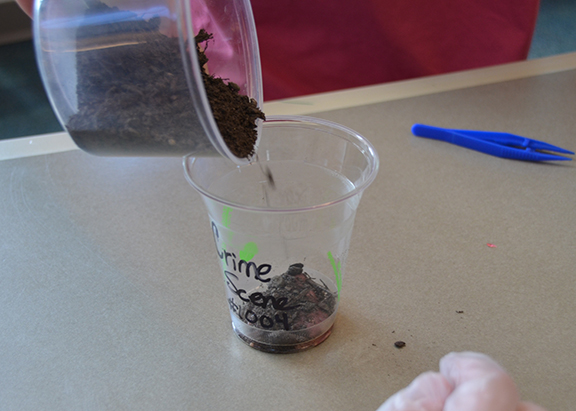
Crime Scene Case #1004
Description: Victim found in a field, covered with a layer of soil to hide the body. The area is sunny, with no trees to provide shade.
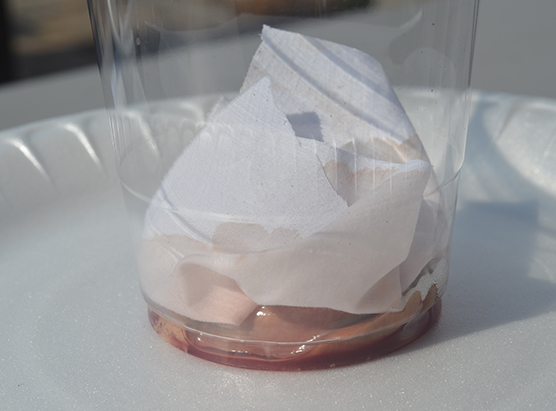
Crime Scene Case #1005
Description: Victim found in the woods, covered with a blanket to hide the body. The area is shady, and the body is not exposed to the sun.
- — Cover the meat with a small piece of fabric. Do not wrap the fabric around the meat.
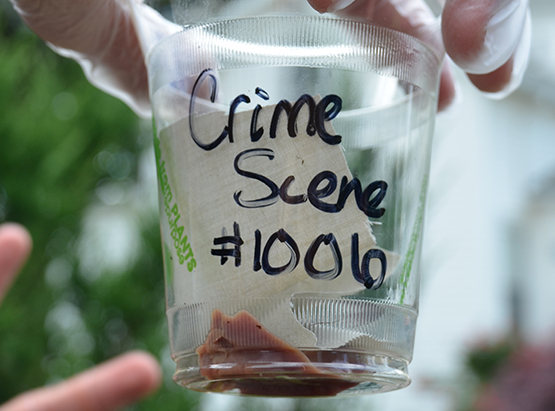
Crime Scene Case #1006
Description: Victim found in a field, covered with a blanket to hide the body. The area is sunny, with no trees to provide shade.
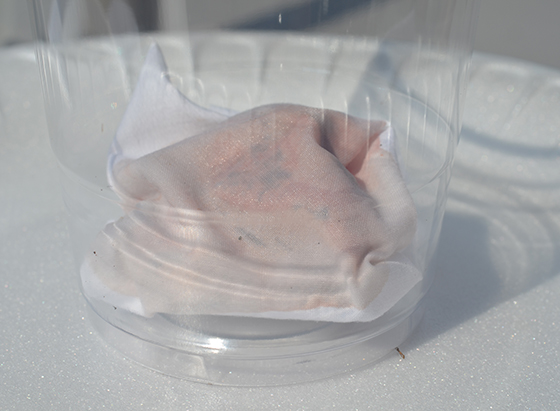
Crime Scene Case #1007
Description: Victim found in the woods, wrapped tightly in a blanket to hide the body. The area is shady, and the body is not exposed to the sun.
- — Wrap the meat with a small piece of fabric. Be sure that the meat is completely covered.
- — Place the wrapped meat in a cup.
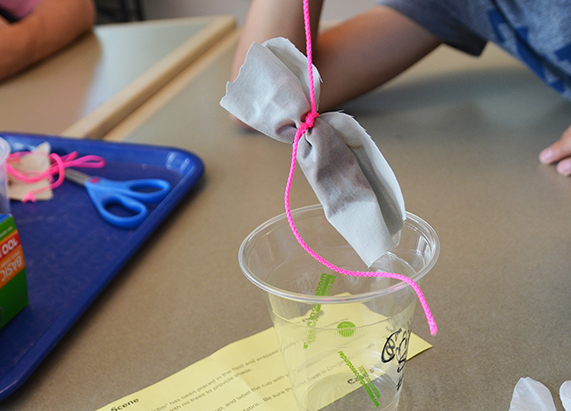
Crime Scene Case #1008
Description: Victim found in a field, wrapped tightly in a blanket to hide the body. The area is sunny, with no trees to provide shade.
- —Place the wrapped meat in a cup.
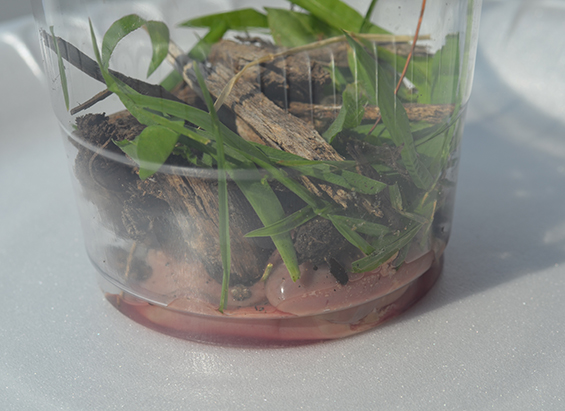
Crime Scene Case #1009
Description: Victim found in the woods, covered with plant scraps to hide the body. The area is shady, and the body is not exposed to the sun.
- — Cover with a thin layer (less than 1 cm) of grass clippings and several (fewer than five) small sticks.
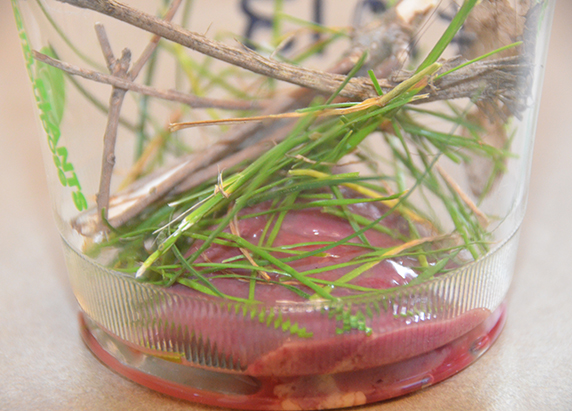
Crime Scene Case #1010
Description: Victim found in a field, covered with plant scraps to hide the body. The area is sunny, with no trees to provide shade.
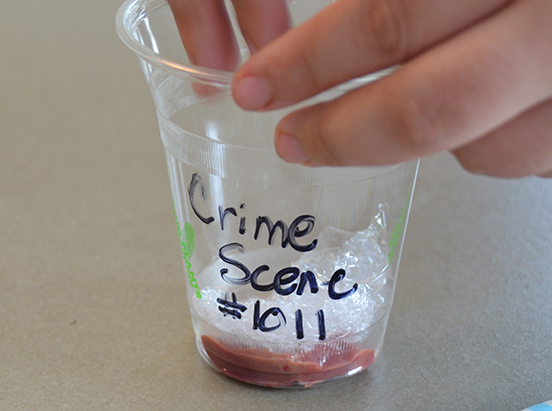
Crime Scene Case #1011
Description: Victim found in the woods, covered with plastic to hide the body. The area is shady, and the body is not exposed to the sun.
- — Cover the meat with a small piece of plastic. Do not wrap the plastic around the meat.
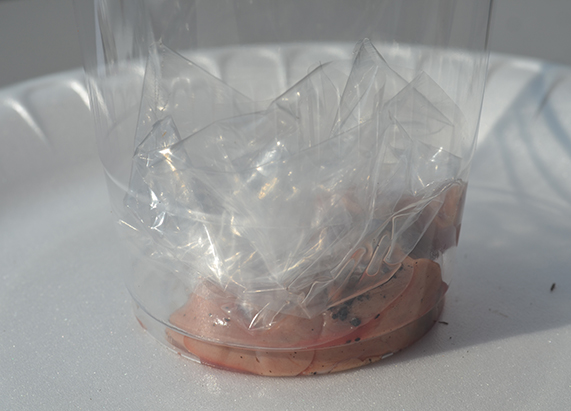
Crime Scene Case #1012
Description: Victim found in a field, covered with plastic to hide the body. The area is sunny, with no trees to provide shade.
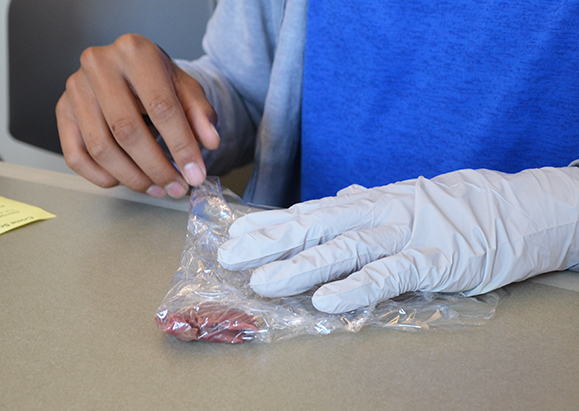
Crime Scene Case #1013
Description: Victim found in the woods, wrapped tightly in plastic to hide the body. The area is shady, and the body is not exposed to the sun.
- — Wrap the meat with a small piece of plastic wrap. Be sure that the meat is completely covered.
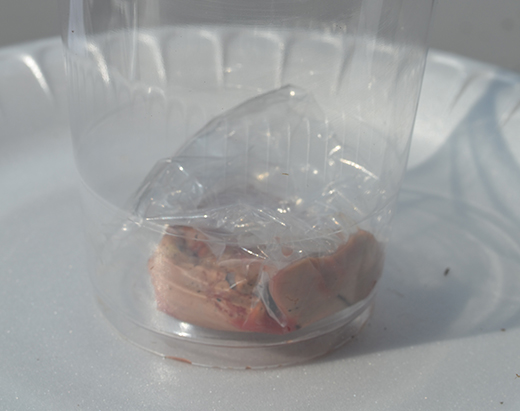
Crime Scene Case #1014
Description: Victim found in a field, wrapped tightly in plastic to hide the body. The area is sunny, with no trees to provide shade.
Setting Up the Mini-Body Farm
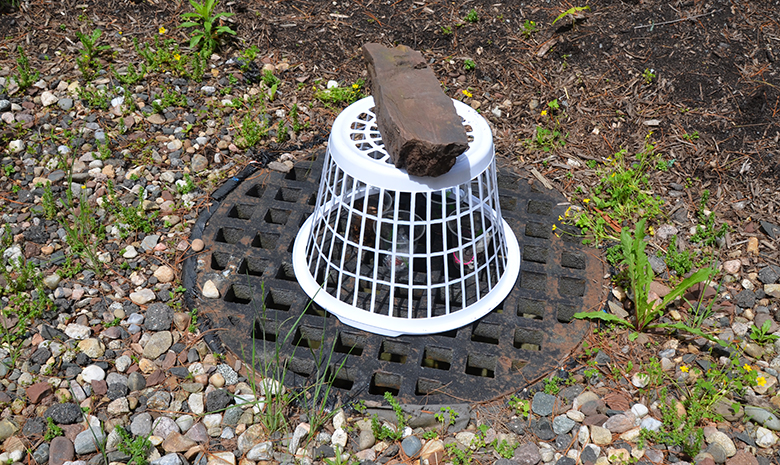
- If you haven’t already done so, select a spot (or spots) outdoors where people won’t bother the cups.
- Place the “sunny” cups together under an upside-down laundry basket to protect the cups from scavengers. If needed, place heavy rocks on top.
- Repeat with the “shady” cups.
- Leave your cups outside for the next 5–7 days, returning each day to make observations.
Fly Life Cycles
The green bottle fly is found in most tropical and temperate regions around the world, and it’s often one of the first insects to arrive at a corpse. Scientists have studied the life cycle of green bottle flies and have a good understanding of how environmental variables like temperature affect its rate of development.
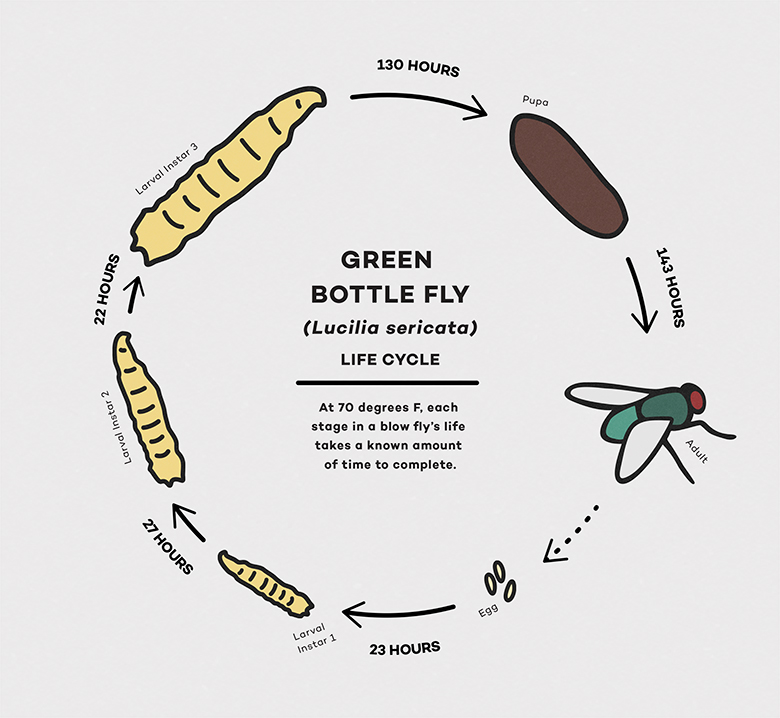
Discussion Questions
- What patterns do you notice in the life cycle diagram?
- What effect do you think temperature has on insect development?
- What other animals have a similar pattern of development or undergo a similar metamorphosis?
Fly development is similar to that of a butterfly. The egg stage is followed by the larval stage, then the pupa, and finally the adult emerges. Scientists can determine how temperature affects fly development by raising maggots in incubators in the lab, where they can control the temperature. Take a look at the Number of Days of Development data below. Notice how long it takes a maggot to develop into an adult in cool, warm, and hot conditions.
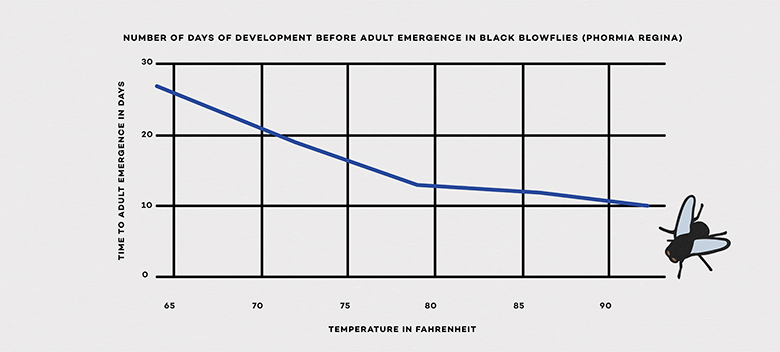
- What kind of data is included in the graph?
- Based on the graph, how does temperature affect the black blow fly life cycle?
- How does the development data here relate to the life cycle diagram of the green bottle fly that you already looked at?
- How do you think the location of the crime scenes (e.g., sunny, shady) in your body farm will affect the rate of maggot development?”
- How could knowing how temperature affects the black blow fly life cycle be useful in solving a crime?
Check out the status of your body farm specimens.
Warning : As the days go by, the body farm will smell like rotting trash, so you might want to breathe through your mouth instead of your nose. Sometimes you have to sacrifice a little for science!
It is okay to gently move any plant material or soil using forceps or plastic utensils to check the surface of the meat, and then return the covering. If you wrapped the meat in plastic or fabric, leave the meat wrapped and only observe insects outside the wrapping.
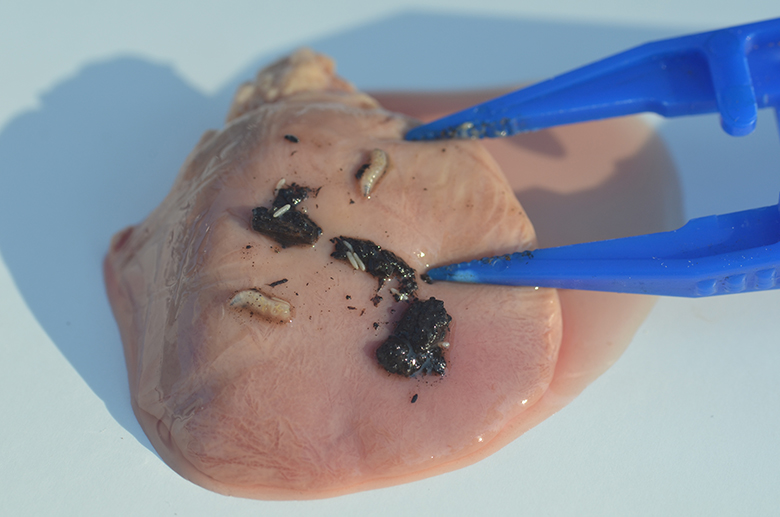
- Return to the body farm each day for up to a week to record observations. Day 1 is one day after you placed the cups outside. Day 2 is two days after, and so on. You might have to briefly lift up the laundry baskets in order to see better.
- On your Body Farm Data & Observation Sheet , record the type and number of any insects present at each crime scene and at the control cups . Use the Common Insect Species at a Crime Scene if you need help with identification.
- Once you’re done observing, return the cups to their location under the laundry baskets in the body farm.
- On the final day of observation, use forceps or plastic utensils to unwrap any meat wrapped in fabric or cloth. Check to see if the unwrapped meat has insects on it. Be sure to wear latex or nitrile gloves.
Disposal: Cups, meat, and all wrappings should be placed in an outdoor trash receptacle secured from scavengers.
Analyzing Your Body Farm
Once all of the control and crime scene conditions have been examined, look for patterns.
- Compare your observations of the crime scene(s) and control cup(s). Look at the number and types of insects you found each day.
- If you recreated more than one crime scene, compare your observations of different crime scene cups. Look at the number and types of insects you found each day.
- Make a bar graph of the number of insects you found on the meat in your control and crime scene cups on the last day. You can graph one crime scene cup and its control, or multiple.
Analysis Questions
To answer some of these questions, investigators might have to share data.
- How did the number and type of insects found in the control and crime scene cups vary over time?
- Was your prediction supported by the data you collected? Explain.
- After comparing all the crime scene and control cups, which conditions attracted more insects? Which conditions attracted fewer?
- Did the maggots in some cups appear to grow faster than maggots in other cups? If so, why do you think that is?
- What patterns do you notice about the different crime scene conditions studied?
- How could the patterns you observed be useful in a real crime scene analysis?
Did your results match those of the experts?
Warning graphic content.
The videos below contain images of rotting human corpses that may be disturbing to a younger audience.
Extension: How to Calculate the Time of Death
Maggots found at a crime scene can help forensic entomologists determine how long a corpse was there. To understand how, let’s take another look at the Green Bottle Fly Life Cycle to see how long it takes a larva to develop at 70°F into an adult.
Now let’s revisit the black blow fly graph. The graph shows that it takes longer for a black blow fly to develop into an adult when temperatures are cooler than when they’re warmer.
Why does temperature matter? First, insects can only develop if the temperature is above a certain threshold, which varies from species to species. And then to grow from one stage in its life cycle to the next, an insect requires a certain amount of thermal energy, or heat.
Calculating the thermal energy for a given stage of growth entails multiplying the temperature by the time the insect was exposed to that temperature. Because the temperature outside is always changing during the day, scientists use the average daily temperature for this calculation.
The total amount of thermal energy that an insect requires to reach a given stage of its life cycle is referred to as the accumulated degree hour (ADH). Scientists have determined ADH values for many species of fly that can be found on corpses.
If forensic entomologists can determine the life stage of maggots on a corpse at a crime scene, they can estimate how long the body was there. But it’s sometimes hard to figure out life stage just by looking at maggots. Instead, scientists collect the larvae and transfer them to temperature-controlled incubators in the lab. There, they let the maggots develop into adults.
Based on the time it takes the maggots to mature in the lab at a controlled temperature, the scientists can determine how much thermal energy the insects used in the lab. By subtracting that value from the total ADH required for the species’ entire life cycle, the scientists can determine the thermal energy the maggots must have accumulated at the crime scene. Armed with that information, along with data on the average daily temperatures at the crime scene, the scientists can calculate how long it took for the maggots to develop on the corpse, and hence determine the approximate time of death of the body.
Using your local weather conditions, you can estimate the age of fly larvae found in your body farm.
How to do ADH Calculations
Let’s practice by starting with ADH calculations for the green bottle fly using the Accumulated Degree Hour Data Sheet and the sample calculations below.
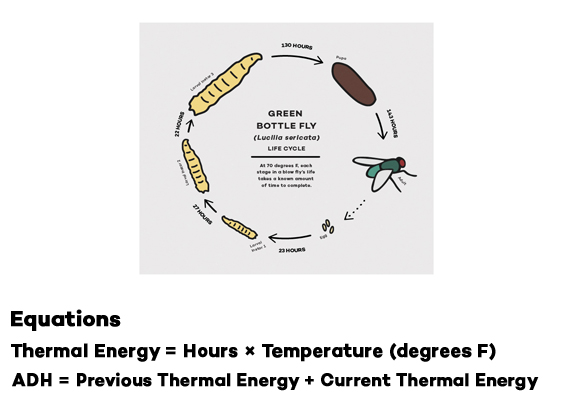
It takes 23 hours for an egg to hatch into a first instar if the temperature is 70 o F.
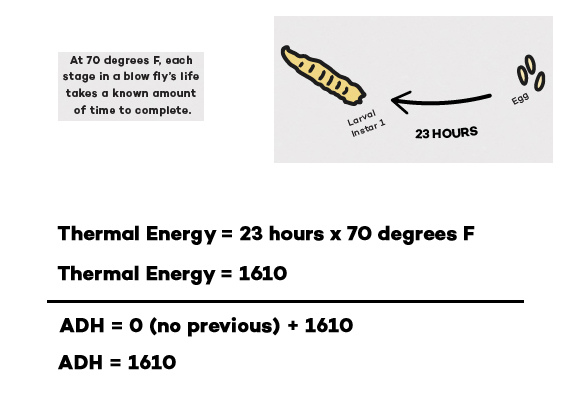
The thermal energy during this stage is 1610. Since this is the initial stage, the ADH = 1610. (If the temperature were cooler than 70 o F, then the fly would develop slower, because an ADH of 1610 MUST be reached in order for the fly to get to the next stage. The ADH is a constant for each stage.)
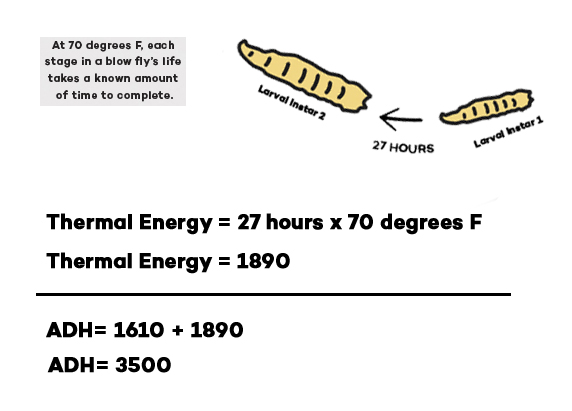
The thermal energy during the next stage is 1890. Adding 1890 to the previous 1610 gives an ADH of 3500.
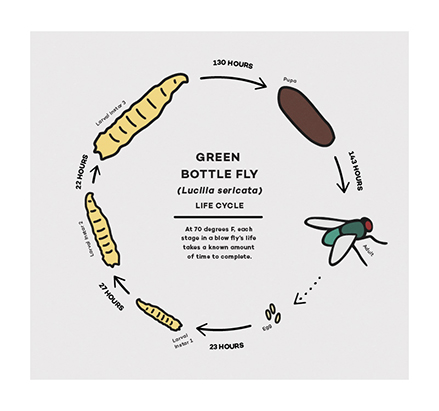
Using your green bottle fly lifecycle, you can complete the remainder of the chart by calculating the thermal energy and then the ADH. You can use this as a reference when determining the life cycle stage of the maggot you collected in your body farm.
Calculate the Age of Your Body Farm Maggots
Before beginning, look up the average daily temperatures at your location during the week of your investigation here .
- Pick one control cup in which you saw eggs and maggots, and record the date and average temperature on the Accumulated Degree Hour Data Sheet for each day the eggs or maggots were there.
- Calculate the Thermal Energy and ADH for each day the eggs or maggots were present.
- Compare the ADH you calculated to the values of ADH for the green bottle fly,* and determine what stage of development your maggots should have been in on the last day of the experiment.
*Although you may have a different local species of fly at your body farm, this exercise does provide good practice for determining life stage.
- Based on your calculations, in what stage of development should the maggots have been in on the last day of the experiment?
- How precise do you think your calculations are? Why?
- Does your calculation of the total ADH match the physical appearance of your maggots on the last day? For example, if your calculation corresponds to the ADH required to reach the 2nd instar, did you observe medium-size maggots?
- What factors could have influenced when the eggs were laid in the cup?
Related Resources
- Entomology in Action lesson , where students can further explore ADH and fly lifecycles.
- San Marcos Body Ranch Used For Forensics Research- CBS Austin, TX
- Science and Engineering Practices: Analyzing and Interpreting Data , Using Mathematics and Computational Thinking
- Crosscutting Concept: Patterns
- Disciplinary Core Idea; LS1.B: Growth and Development of Organisms
Illustrations in this resource were created by Ari Tiziani for Science Friday.
Educator's Toolbox
Meet the writer.

About Jennifer O’Brien
Jennifer O’Brien is a teacher and the Global Studies Program Director at the Watkinson School in Hartford, Connecticut, where she has taught science since 1998. She’s a proponent of labs, field trips, and hands-on learning in lieu of standard lectures, and encourages her students to make connections between science and matters of social and environmental justice whenever possible.
Explore More
Science friday spoonfuls.
Classroom-ready doses of current science, technology, and engineering stories.
Fossilization And Decay At The La Brea Tar Pits
Using the La Brea Tar Pits as inspiration, look at the conditions that affect fossil formation.
Privacy Overview
- Search Please fill out this field.
- Manage Your Subscription
- Give a Gift Subscription
- Newsletters
- Sweepstakes
:max_bytes(150000):strip_icc():format(webp)/cassie-nyc-tout-091824-41d5163535de45dca64ab0a7eee756b1.jpg)
- Crime History
Ozzy and Jack Osbourne Don't Recommend Standing in a Forest Surrounded by 50 Decomposing Bodies
Ozzy and Jack Osbourne went on a road trip, taking in the diverse sights of this great nation—however, there was one place they never want to visit again
:max_bytes(150000):strip_icc():format(webp)/Jordan_runtagh-50437936b9b24b0bbdfc72abb75010b3.jpg)
Ozzy and Jack Osbourne recently spent months road tripping across the United States for the second season of their travel series, Ozzy & Jack’s World Detour . Along the way they took in the diverse sights, sounds, tastes and smells of this great nation. However, there was one stop they never want a visit again—the Body Farm.
“It should not be mistaken for a health retreat!” Ozzy was quick to point out during an interview with PEOPLE.
In actuality, the so-called farm is a research facility in Texas where students study forensic anthropology. “It’s basically how dead people decompose,” Jack explains. “We stood in the middle of the forest in front of, like, 50 decomposing bodies. It was kinda gnarly.”
Rather than having the bodies locked away in a sterile laboratory, they were just kind of … out there. “Imagine going on a stroll through the forest and there’s just bodies laying out everywhere,” he elaborates. “Everything from three-day-old bodies to three-month-old skeletons. It’s fascinating, but it’s horrible.”
Though no strangers to the macabre side of life (and death), the experience proved too much for the Princes of Darkness. “We highly underestimated the gnarlyness of that,” Jack reflects from a place comfortingly far from the horrific odor. “We definitely learned our lesson. It was pretty much the worst thing ever, not going to lie.”
On this, father and son were in agreement. “Believe me, it’s not somewhere I need to go back to again,” Ozzy confirmed.
For more from Ozzy and Jack Osbourne, pick up the latest issue of PEOPLE, on newsstands now.
The Body Farm was apparently traumatic enough to convince Ozzy to adjust his plans for the afterlife. “Before going there, my dad was always like, ‘Oh, I wanna get buried, I want to get buried,'” Jack says. “After that: ‘Nope! Cremate me. I don’t want to be a gelatinous goo in the middle of a field in a box.'”
That was far from the only gross incident to go down over the course of their journey. One that springs to Jack’s mind involves the opposite end of the life cycle. “We went to a horse ranch where they breed horses and we watched them j— off a horse. I would not recommend that. Do not go to watch that. Ever.”
Thankfully, the majority of their trek was notably less terrifying—and disgusting—although their ride also provided some worrying moments. As a special treat for his dad, Jack tracked down a vintage 1973 GMC camper, the same kind that Ozzy’s legendary rock band, Black Sabbath, used on their first American tour.
Jack started to rethink the sweet gesture after Ozzy got behind the wheel. “The moment he started driving it, [I thought], ‘Ehh, I don’t know if I want to make this thing last for the next 3,000 miles.’”
They also had differing opinions on that most crucial element of any cross-country journey: the radio. “My dad has very old school taste in music—which is fine, there’s a time and place for everything. But Peter Gabriel and Chicago weren’t really going to be the soundtrack of our road trip.”
The second season of Ozzy & Jack’s World Detour premieres Nov. 8 at 10PM ET/PT on A&E.
Related Articles
- Environment
- Openings & Closings
- Restaurant Guide
- Restaurant Reviews
- Top 100 Bars
- Top 100 Restaurants
- Sex & Dating
- Concert Reviews
- Concert Calendar
Local Music
- Observer Burger Week
- Observer Taco Week
- Observer The Morning After Brunch Event
- Observer Tacolandia
- Arts & Entertainment
- Food & Drink
- Shopping & Services
- Sports & Recreation
- Readers' Choice
- Newsletters
- Advertise with Us
- Flipbook Archive
- Promotions & Free Stuff
- Where To Find Dallas Observer In Print
- Sign Up/Sign In
Alice Cooper and Rob Zombie’s Freaks On Parade Tour Was a Haunted House Onstage

Audio By Carbonatix

Newsletter Sign Up
Enter your name, zip code, and email, sign up for our newsletters.

Fort Worth Music Festival Canceled Following Backlash Over 'Worst Lineup Ever'
By Carly May Gravley

Fans Express Outrage Over Power Trip’s Pantera Tour Announcement
By Vanessa Quilantan
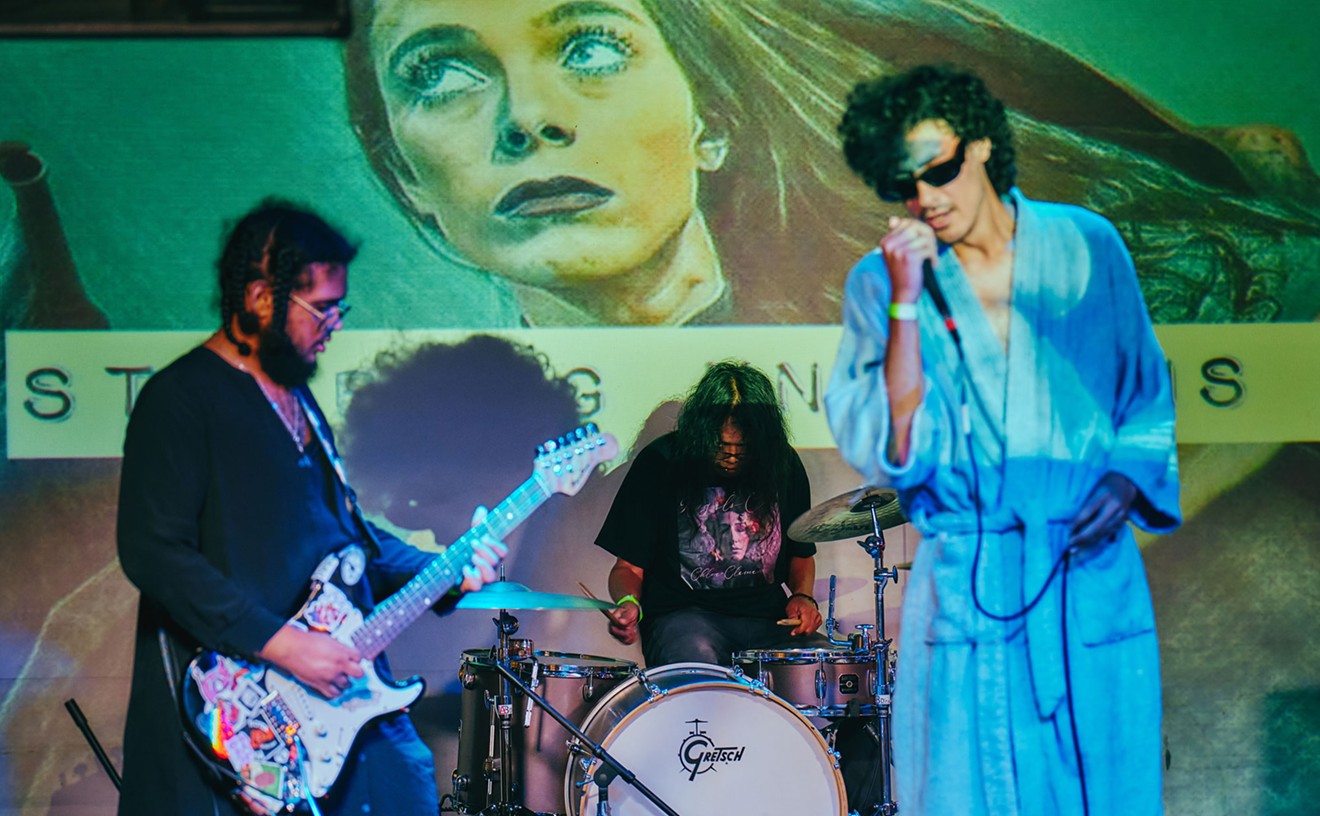
Unhoused Melodies: Like Many Texas Musicians, Denton's 'Rock Philosopher' Rises Above Homelessness
By Christian McPhate

Concert Previews
Slipknot’s shawn 'clown' crahan once bought a bar so the band would have a place to play.
By Garrett Gravley
- View This Week's Print Issue
- Arts & Culture
- Things to Do
- Observer Events
- Advertise With Us
- Terms of Use
- Privacy Policy
- Voice Media Group
- Denver Westword
- New Times Broward-Palm Beach
- Miami New Times
- Phoenix New Times
- V Audience Labs
- V Digital Services

IMAGES
COMMENTS
Forensic Anthropology Center Department of Anthropology 601 University Drive San Marcos, TX 78666 Phone: 512-245-1900 Fax: 512-245-6889
Discover Freeman Ranch Body Farm in San Marcos, Texas: Human remains in varying states of decay are strewn about this Texas State facility for scientific study. Trips.
Last month, Vox science writer Joseph Stromberg visited a body farm at the Texas State University's Forensic Anthropology Centre in the US. With 50 bodies on the grounds at any one time, it's the largest body farm in the world, and it exists to help forensic scientists piece together the mysterious circumstances that human remains are found in during police work.
Freeman Ranch in San Marcos, Texas, is a body farm where students study human. Freeman Ranch in San Marcos, Texas, is a body farm where students study human. Texas. Menu. Nature | Wildlife & Farms. ... The Toddler Tour lasts 45 minutes, while the basic, all-ages tour runs for about 1.5 hours. animal encounters are roughly 15 minutes long. ...
The Body Farm Won't Be in a Tour Pamphlet of Texas at Any Point in Time. What is commonly referred to as "the body farm" here in Texas is actually not the psychotic hatching of ideas in a brain gone awry, which may at first come to mind. In fact, it's officially called the Forensic Anthropology Research Facility, or FARF for short.
Francesca Fiorentini goes to the Texas State University Forensic Anthropology Research Facility to see how donated bodies help solve crimes. Subscribe: htt...
Please forgive us if we are slow to return your call during this time. Please click here if you wish for information on body donation. If you wish to make arrangements for an already deceased individual, please contact the Forensic Anthropology Center directly at 865-806-5106. **A postmortem negative COVID-19 test is required prior to donor ...
The resident donors at Texas' famed Body Ranch offer many lessons about life—and untimely death. A version of this story ran in the March / April 2023 issue. (Photo credit: Kaylee Greenlee Beal ...
Take a closer look at the fascinating work of the Body Farm Forensic Anthropology Center at Texas State. Explore the groundbreaking research into human body ...
In fact, people have to register to donate their bodies before they die. Currently, there is a list of about a thousand people. Once a body arrives it goes through the intake lab to be looked at ...
A Forensic Anthropology Research Facility was commissioned by the Texas State University Department of Anthropology and is under the direction of Dr. Michelle Hamilton, a former student of Dr. Bill Bass, founder of the first body farm. [3] The forensic research facility is fully operational and is part of the Forensic Anthropology Center at Texas State (FACTS).
At the Texas 'Body Farm,' They Plant Human Corpses. Situated on the edge of the Balcones Canyonlands in the heart of central Texas is an unusual farm. If you were to stumble upon this ...
The mission of the Forensic Anthropology Center at Texas State (FACTS) is to advance forensic anthropology and related sciences through world-class education, research, service, and outreach. FACTS is a multifaceted center that encompasses a body donation program, the outdoor Forensic Anthropology Research Facility (), the Osteological Research and Processing Laboratory (), and the Grady Early ...
The real-life BODY FARM is located at the University of Tennessee's Forensic Anthropology Founded by Dr. William Bass, the Center includes two departments: a state-of-the-art scientific research facility, and an outdoor research site known as the Body Farm. Here, human remains lay openly exposed to the elements. Some bodies are covered with plastic or clothing, some are ...
Forensic Anthropology Center Department of Anthropology 601 University Drive San Marcos, TX 78666 Phone: 512-245-1900 Fax: 512-245-6889
Wescott is the director of the Forensic Anthropology Center (FACTS) at Texas State University in San Marcos, Texas, and I am following him to the school's 4,200-acre Freeman Ranch for a tour of its 26-acre forensics farm, commonly referred to as a body farm. And a dead buck isn't the body I drove out here to see.
When Dr. William M. Bass first opened his center to study human remains in 1981, he had one dead body and a 16 square foot cage. By 2007, the farm had over 150 decaying specimens, many donated to ...
WELCOME TO STAFS. The Southeast Texas Applied Forensic Science Facility (STAFS) is a state-of-the-art research, education, and training center designed to advance academic and technical knowledge in the application of anthropology, human anatomy, forensic science, biology, and chemistry. Bodies donated to the STAFS facility are a precious asset ...
This is the Forensic Anthropology Research Facility (FARF), also known as the "body farm," at Texas State University's Freeman Ranch in San Marcos, about 35 miles from Austin. At this 26-acre facility, the largest of its kind, students research the decomposition of human bodies left outside, exposed to the elements, and sometimes animals. ...
Slideshow: Scenes From Texas State's Body Farm. Freeman Ranch in San Marcos is home to about 50 human corpses donated to the Forensic Anthropology Center at Texas State University, which uses them ...
This is the body farm, where forensic scientists and researchers learn about human decomposition. When William K. Bass first opened his center to study human remains in 1981, he had one dead body and a 16 square foot cage. By 2007, the farm had over 150 decaying specimen - many donated to the farm by interested volunteers.
Our understanding of the clues that insects can provide about a crime scene comes from research done at facilities called body farms. At these facilities, forensic scientists study how bodies decompose, and forensic entomologists study the insects that contribute to that decomposition. In this activity, you will create your own mini-body farm ...
Ozzy was quick to point out during an interview with PEOPLE. In actuality, the so-called farm is a research facility in Texas where students study forensic anthropology. "It's basically how ...
The Freaks on Parade Tour, with horror masters Alice Cooper and Rob Zombie, brought the best kind of shock-rock to Fort Worth's Dickies Arena.
Zillow has 12 photos of this $435,550 3 beds, 3 baths, 2,625 Square Feet single family home located at 304 Freestall Dr, Midlothian, TX 76065 built in 2024.